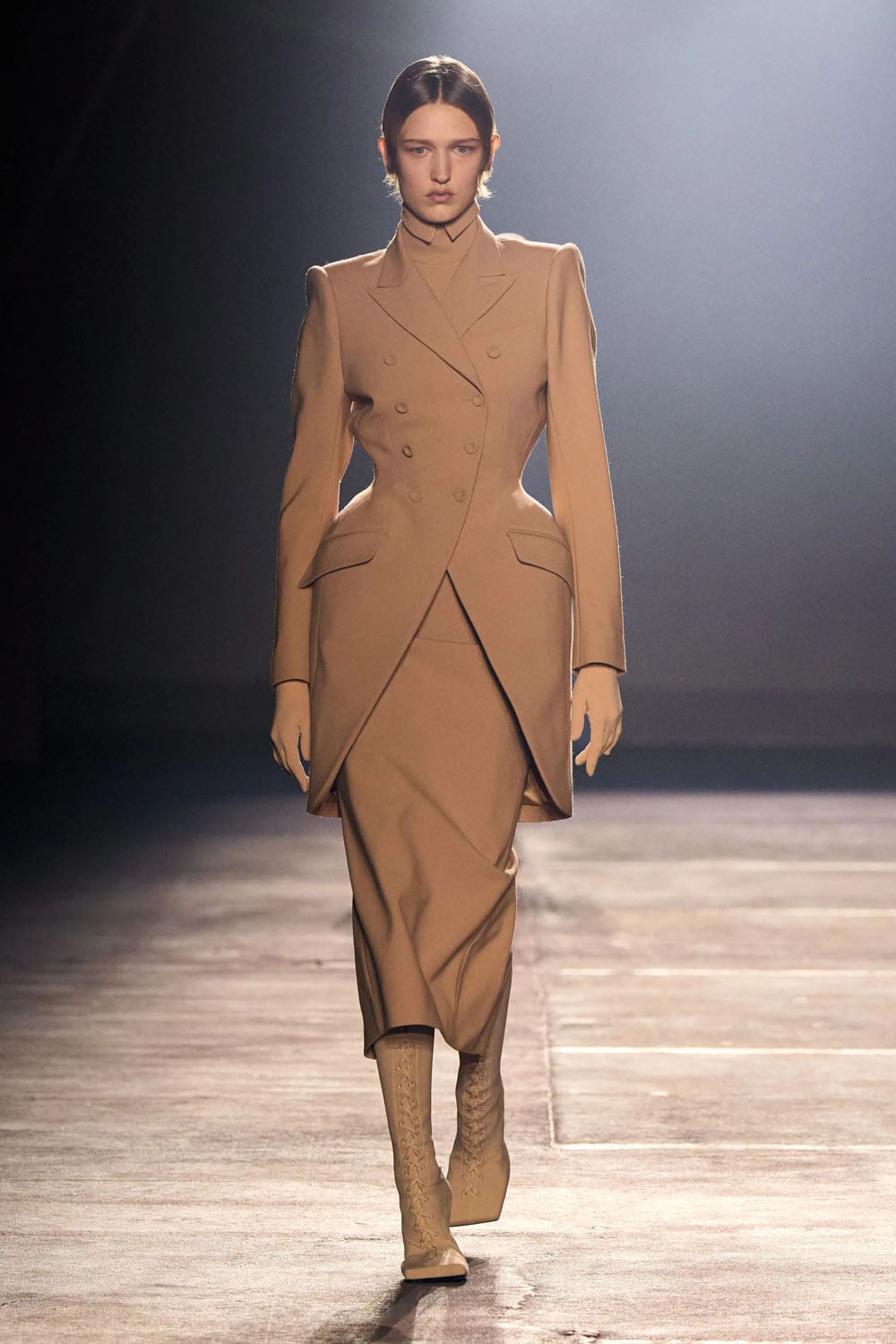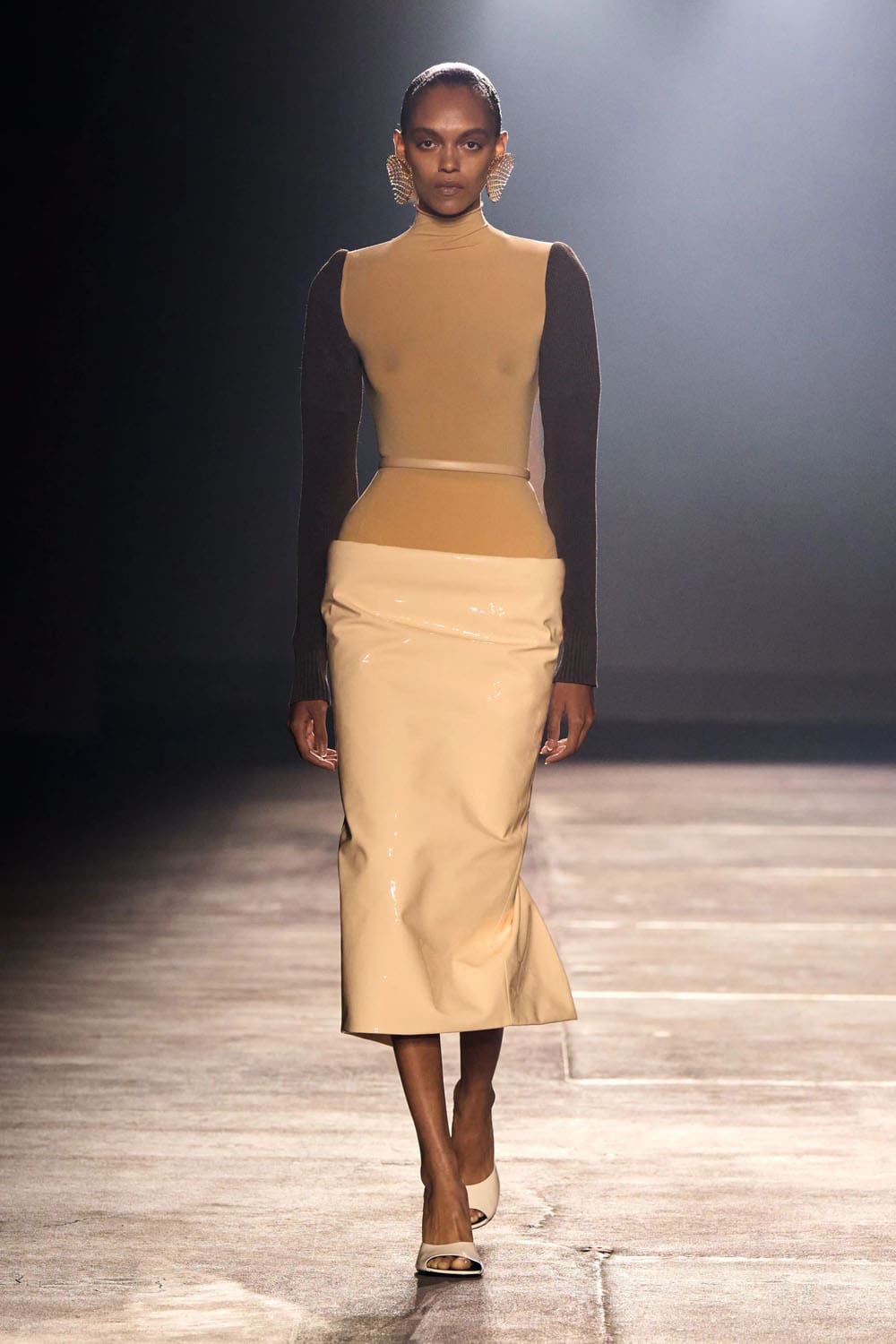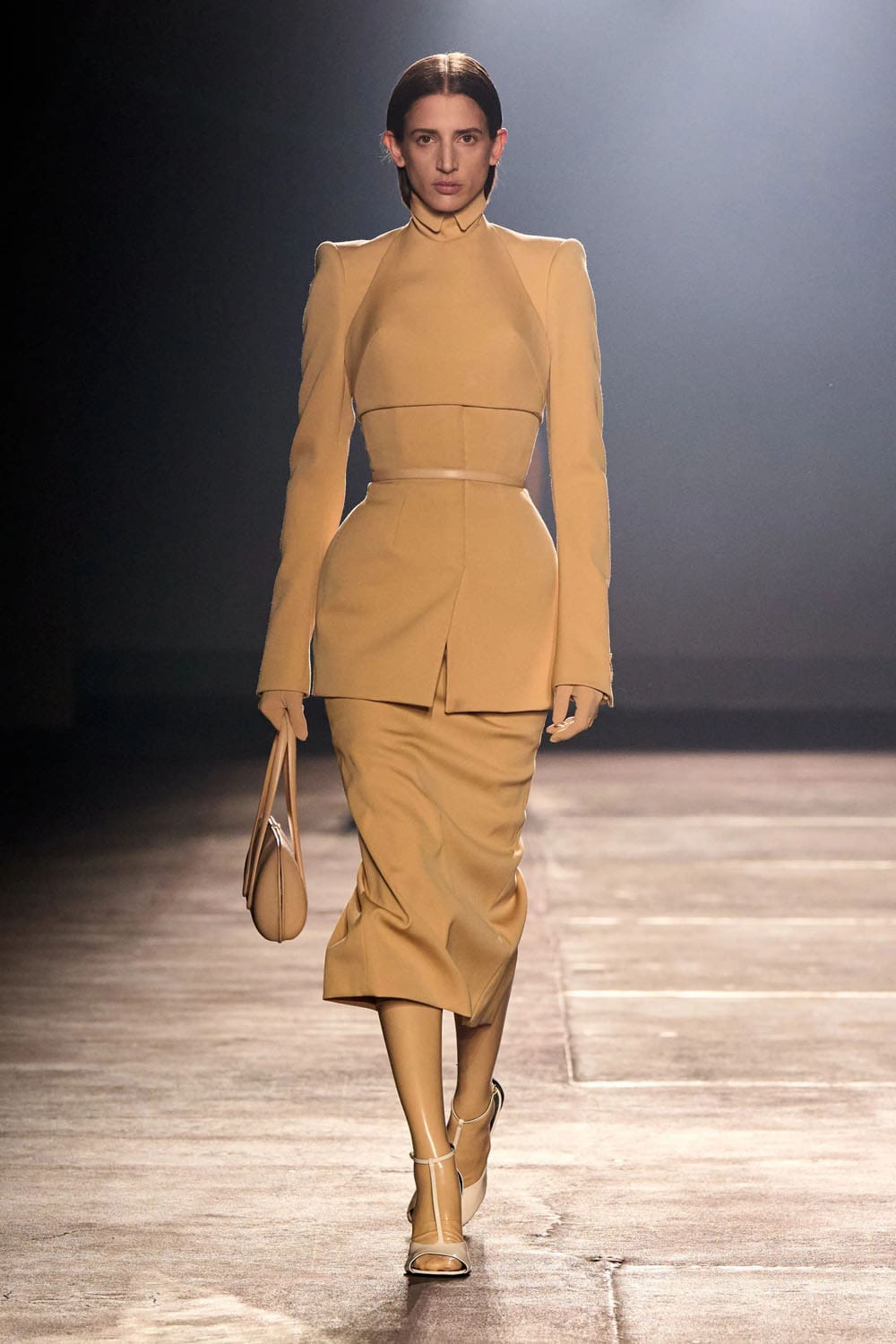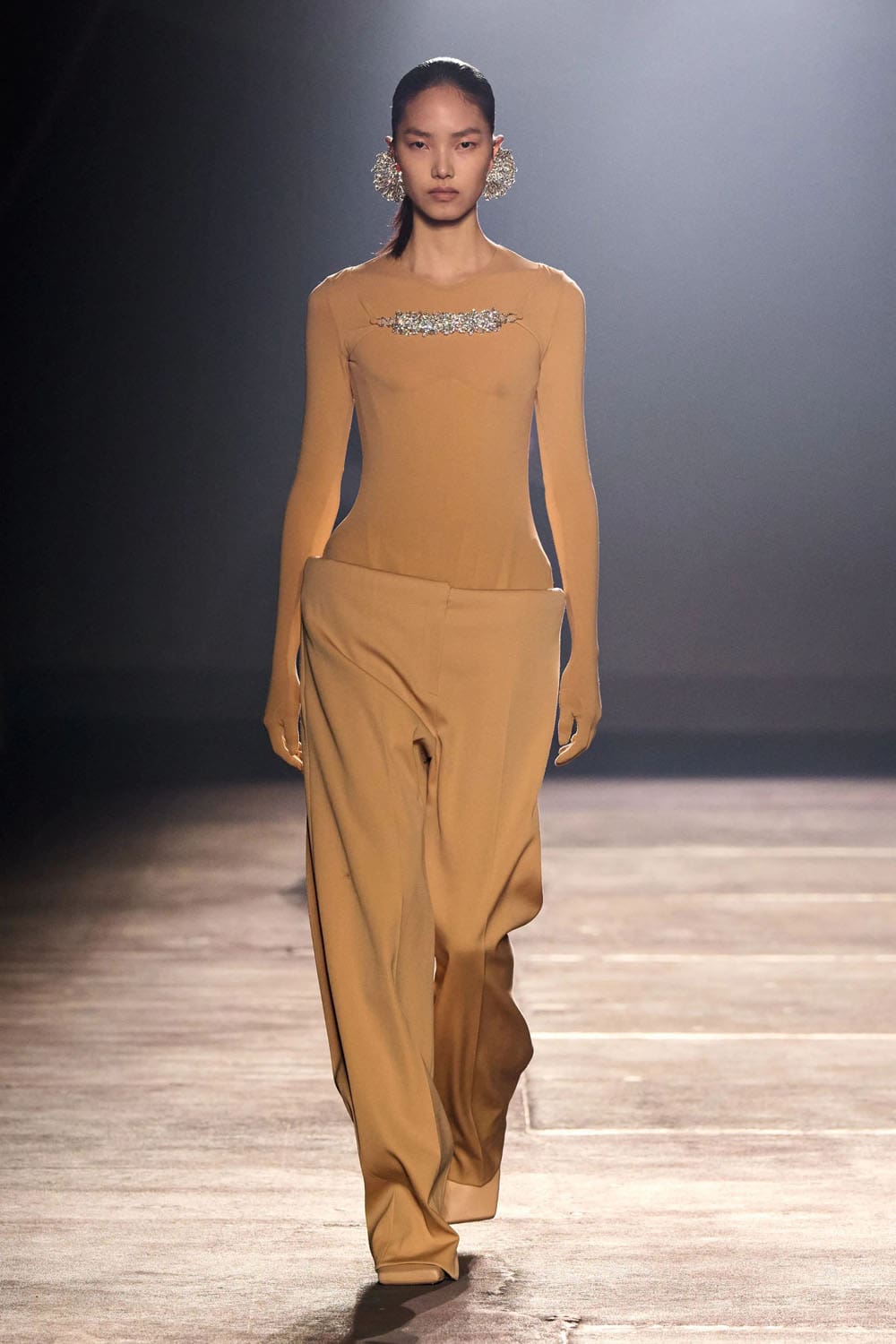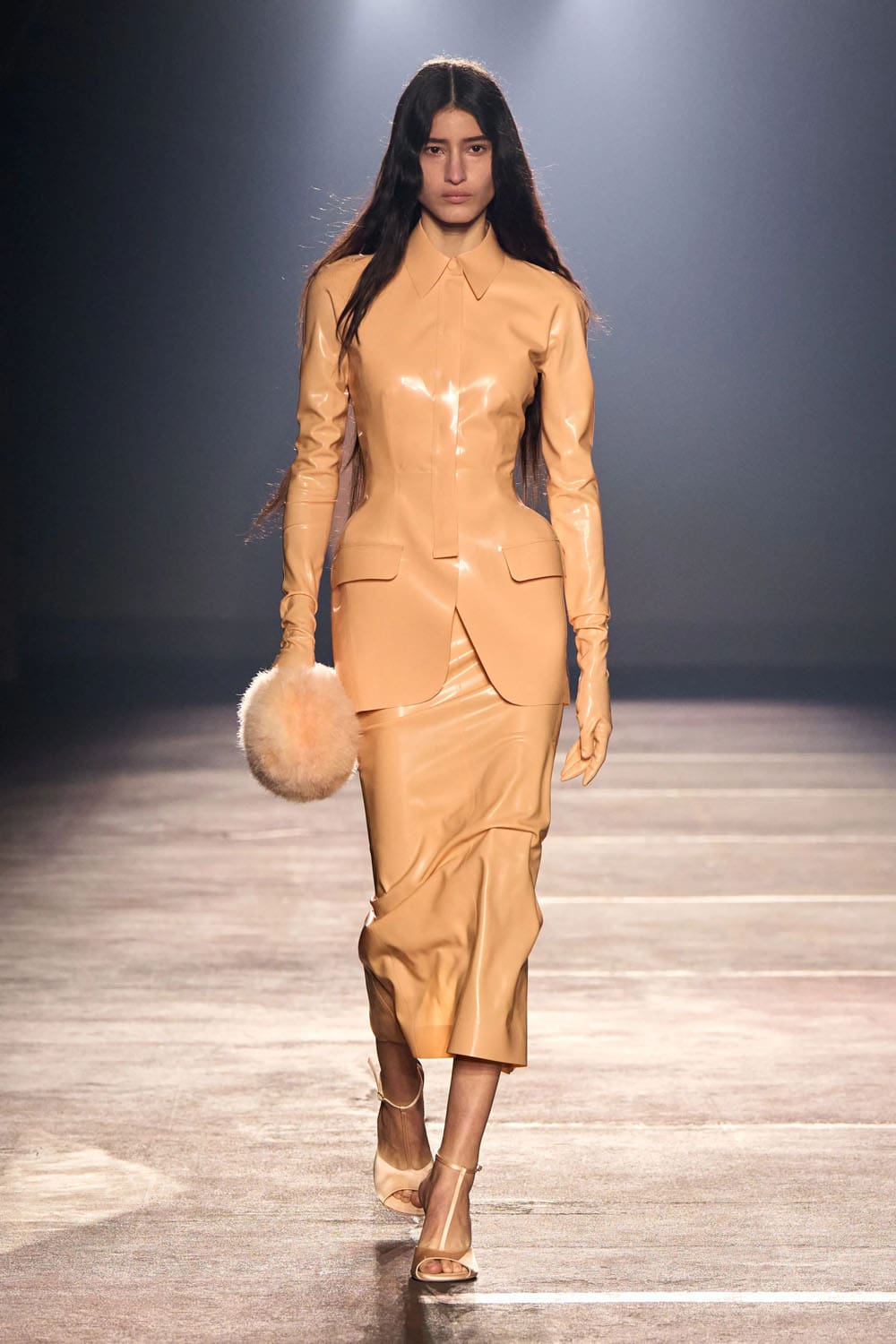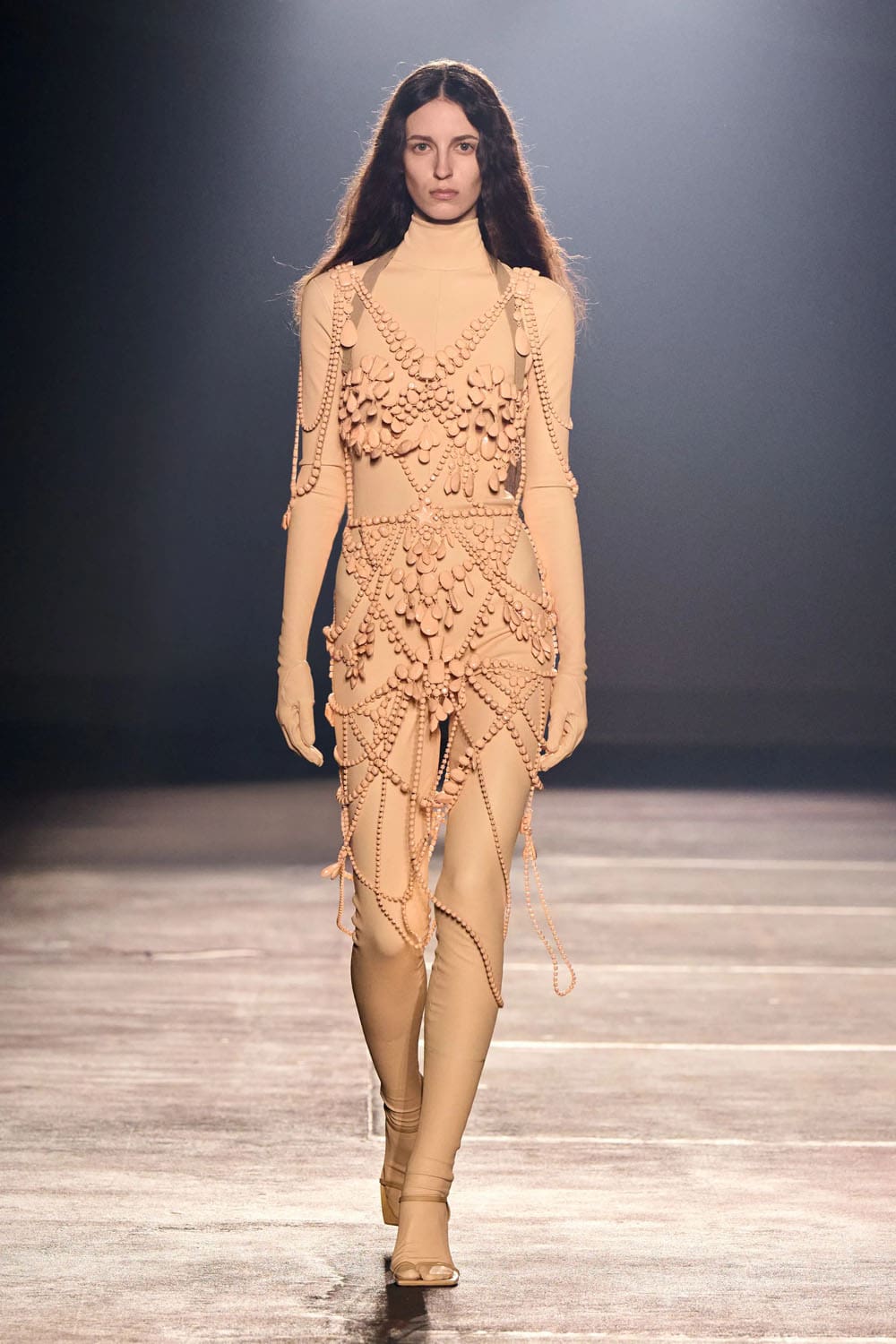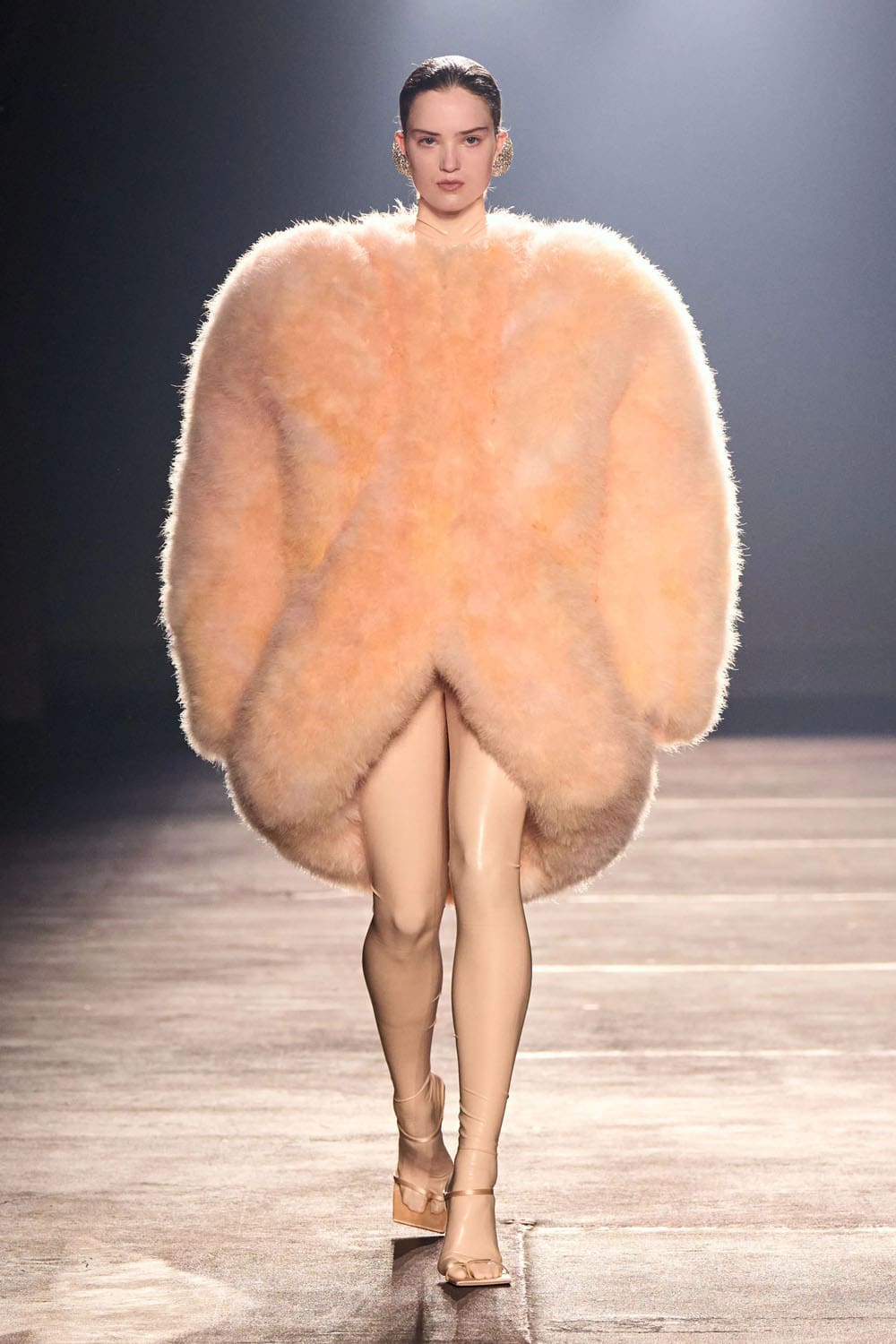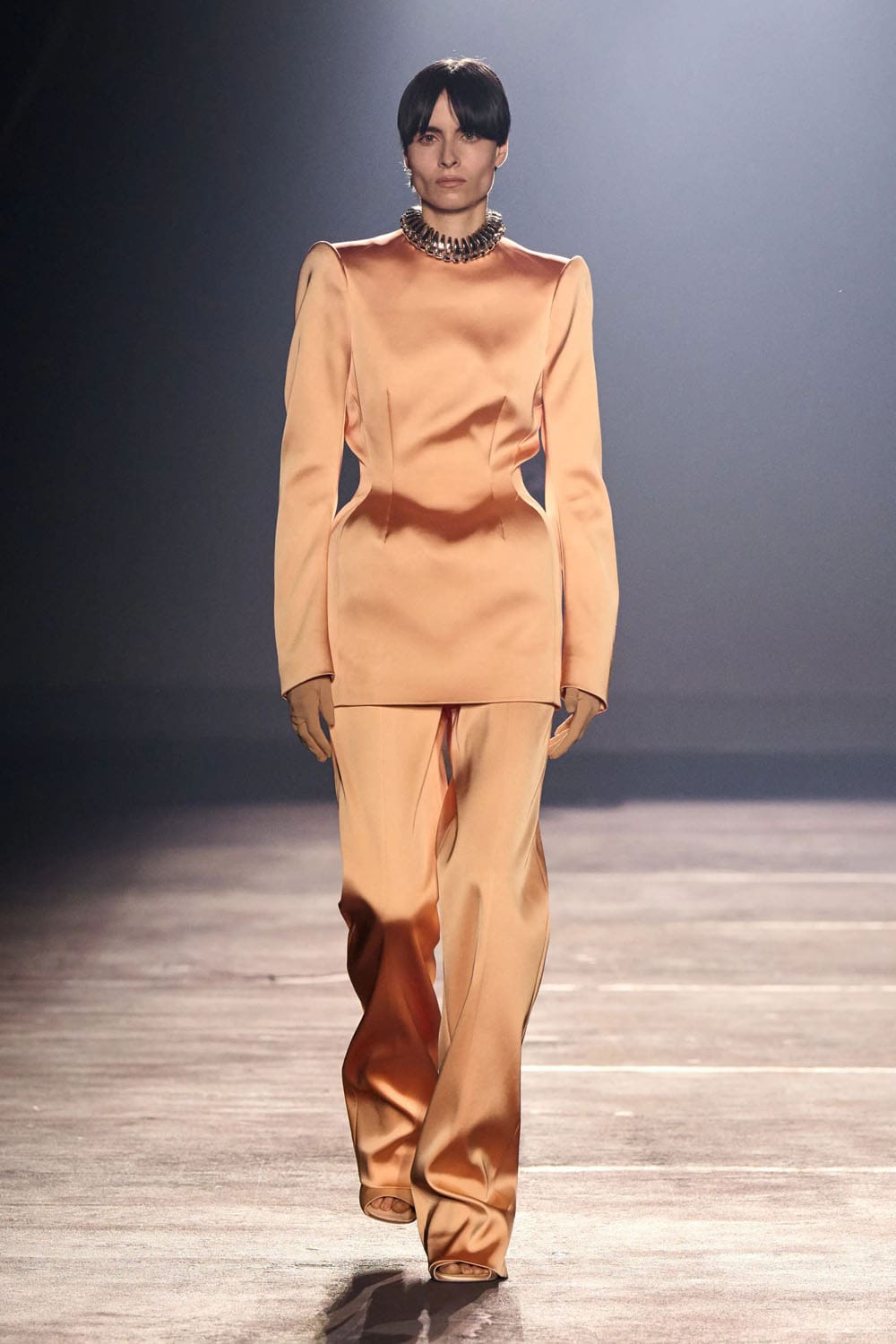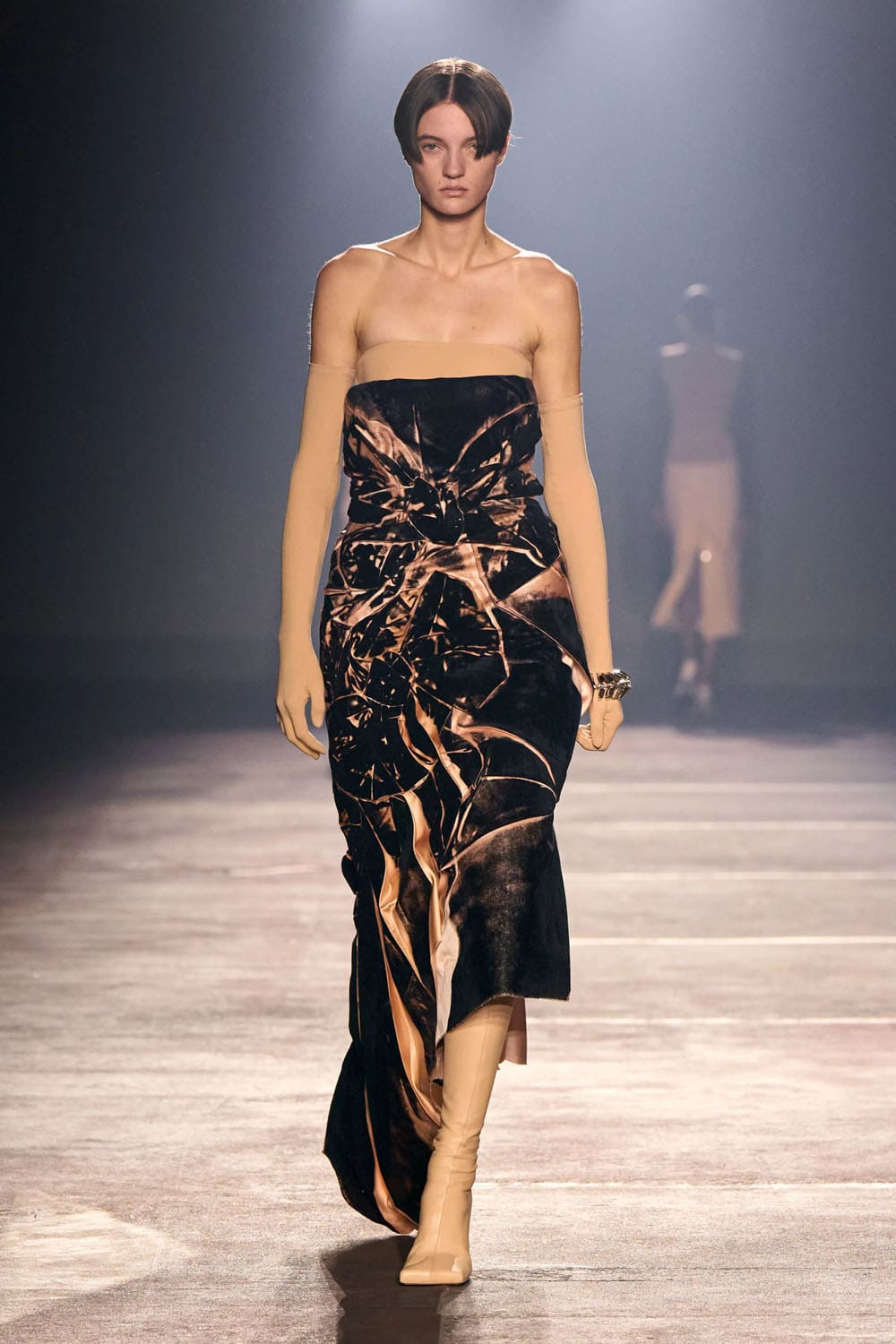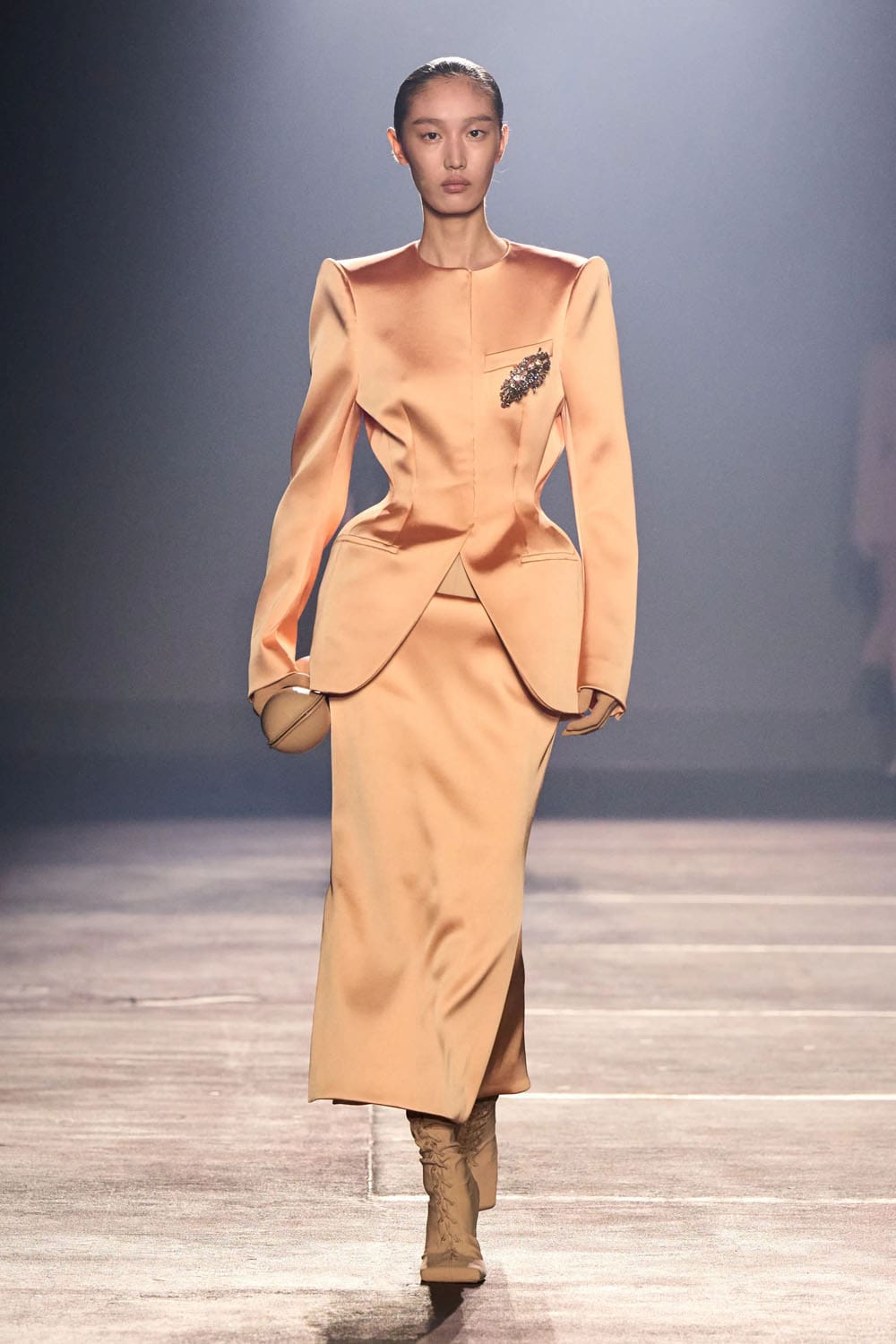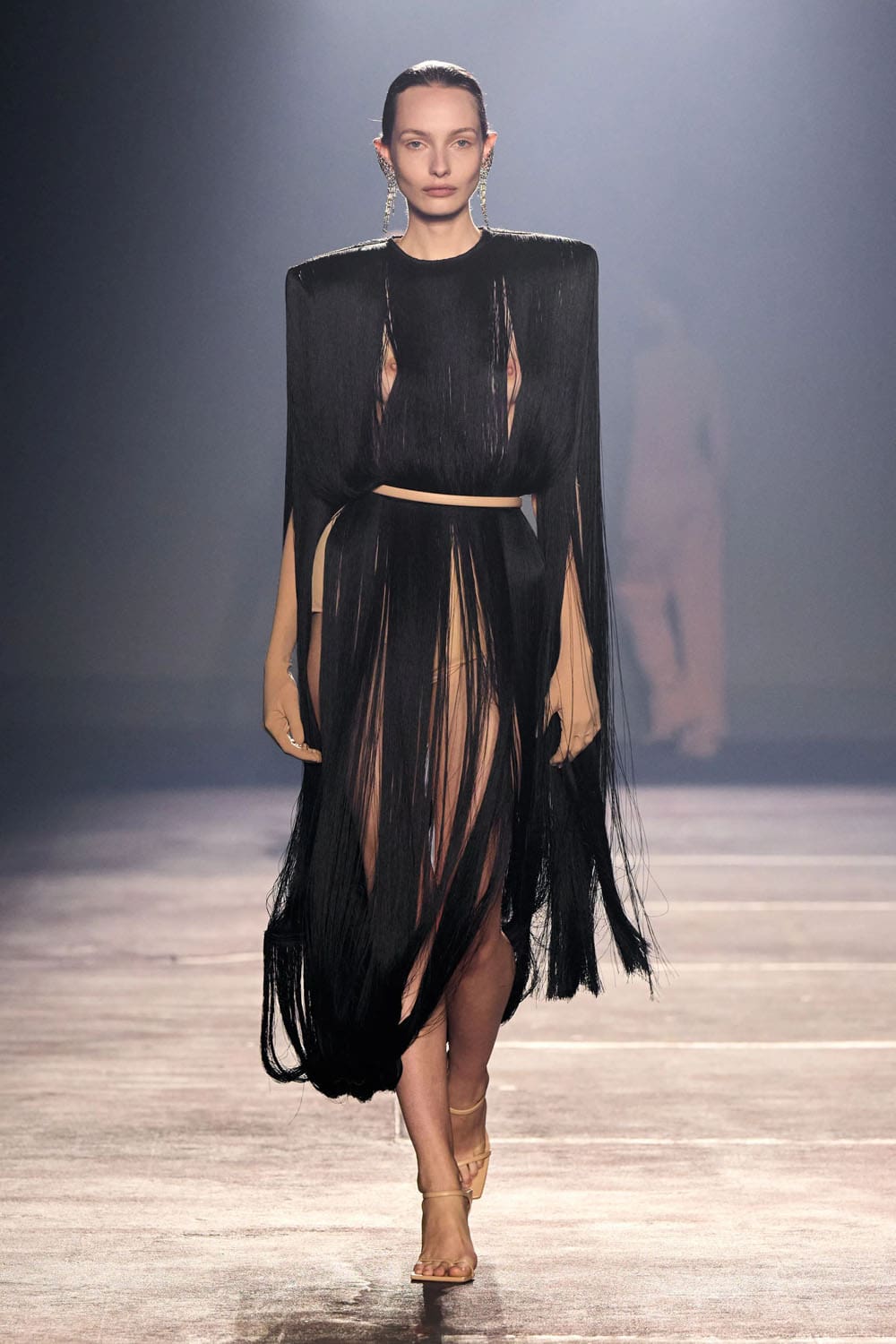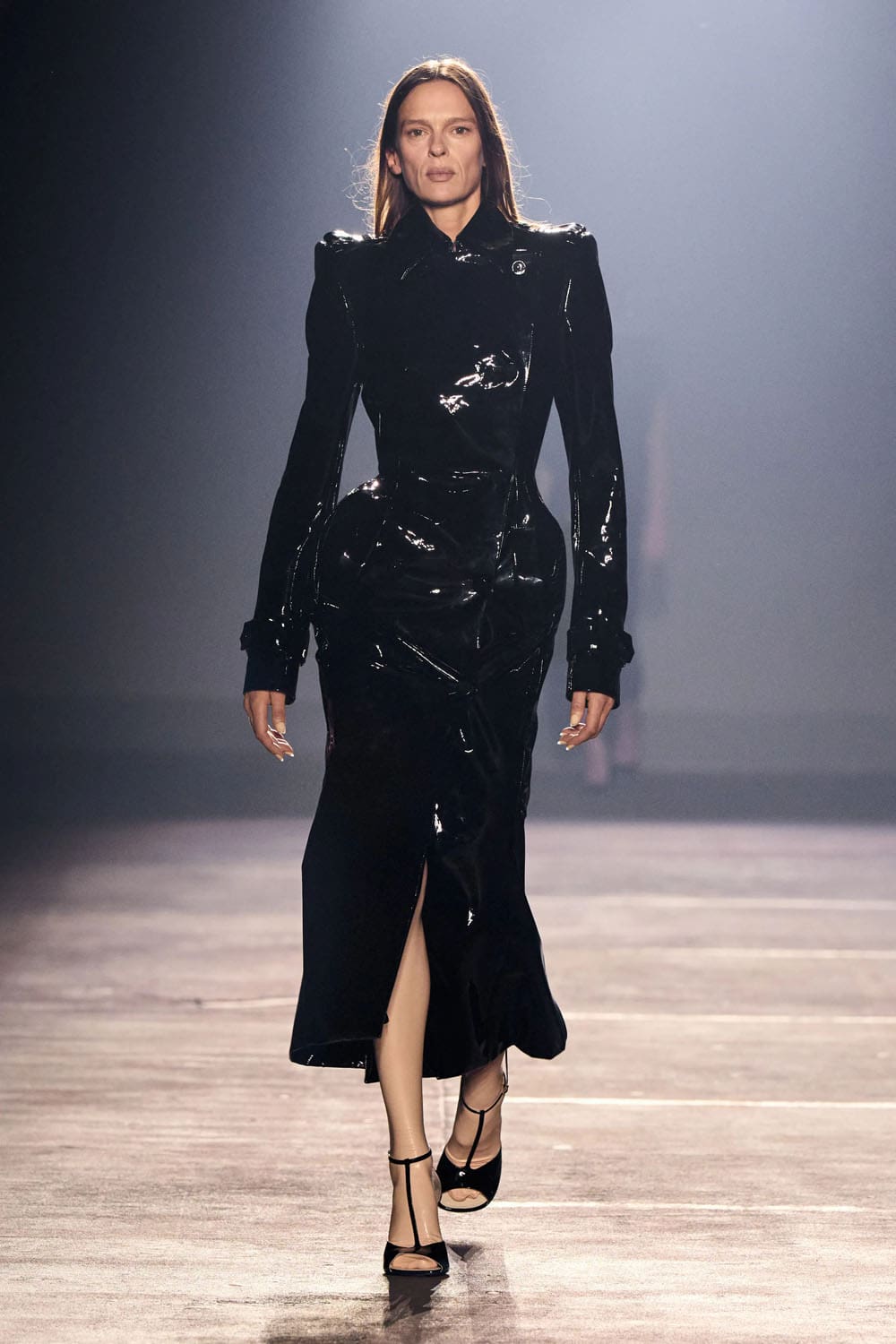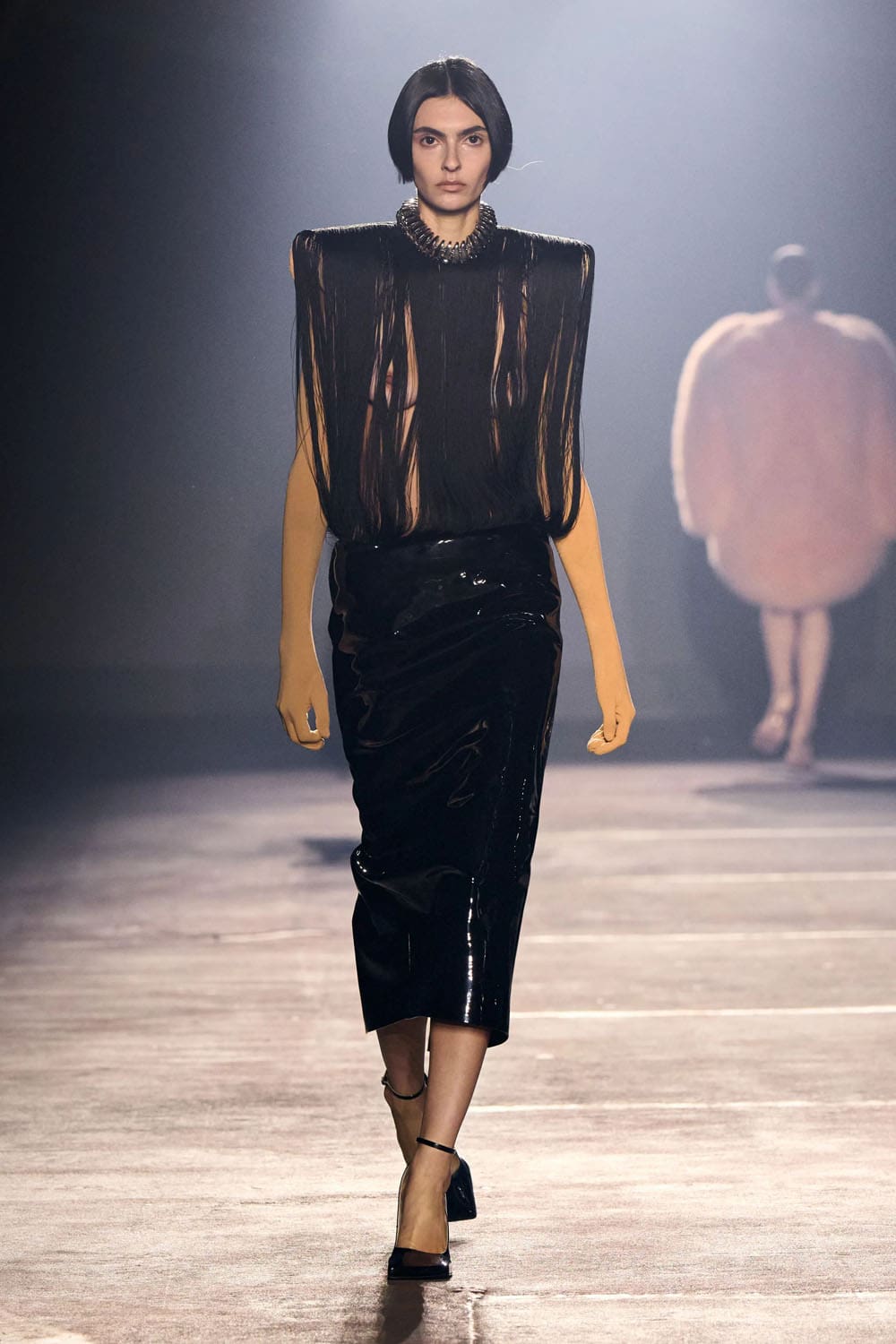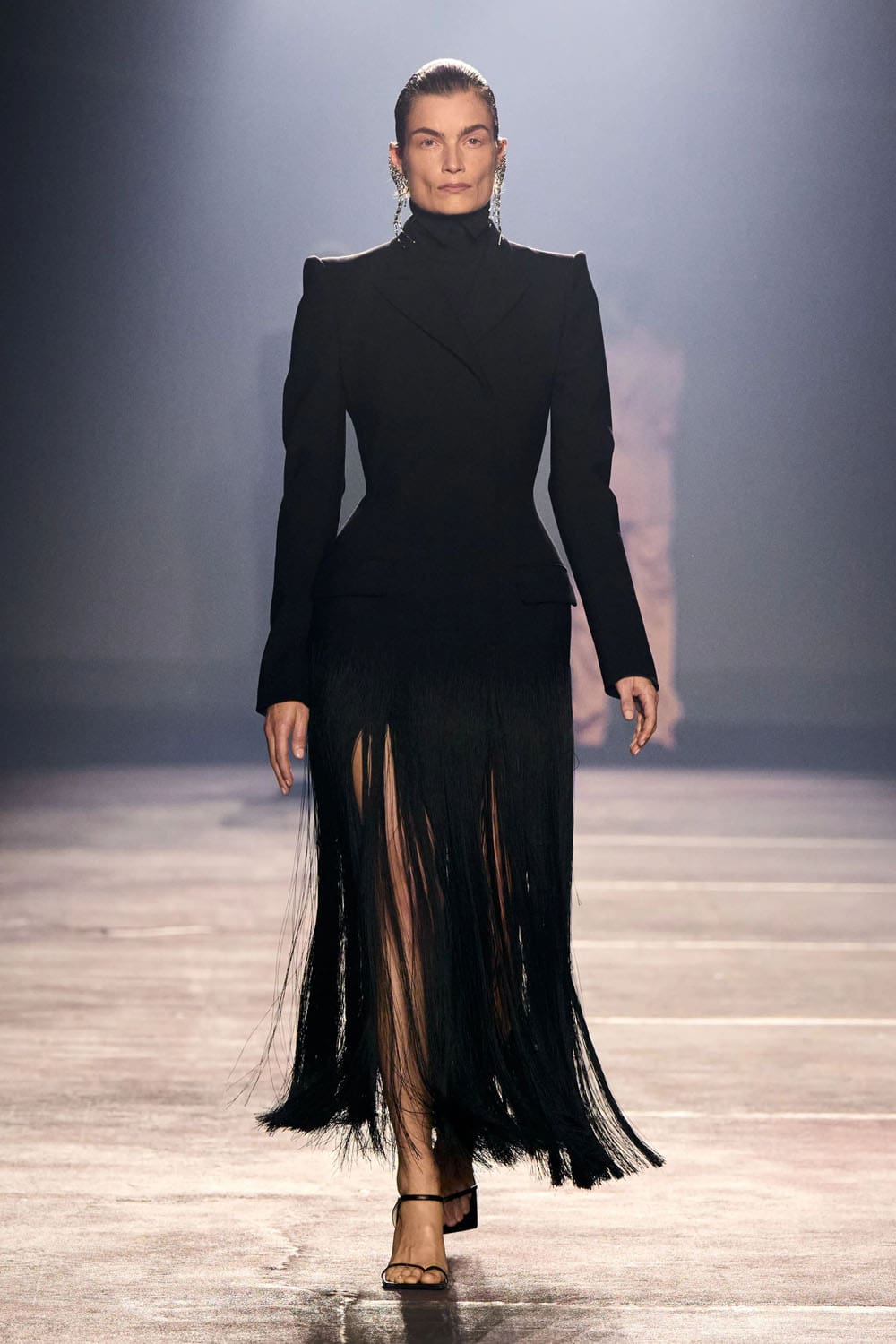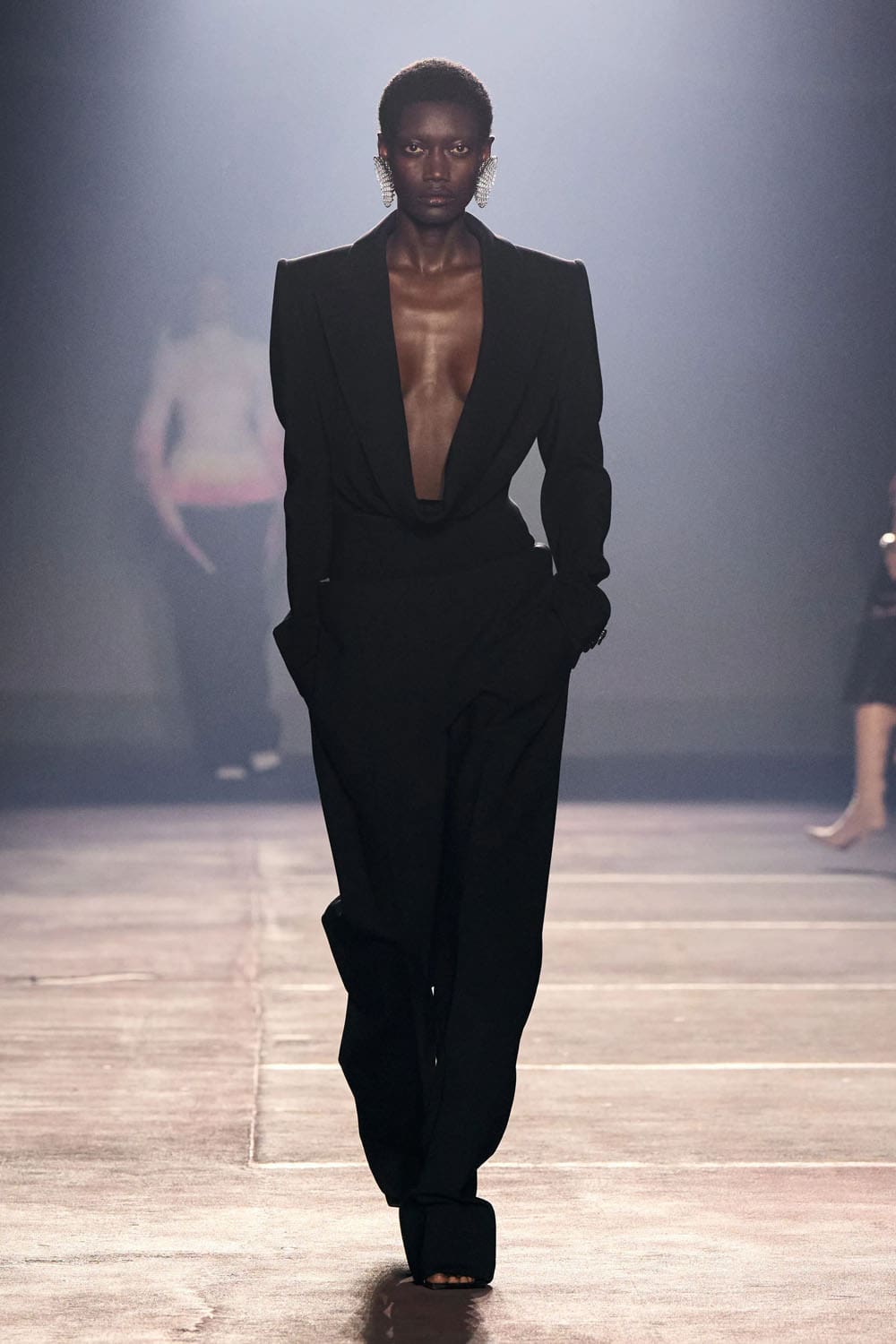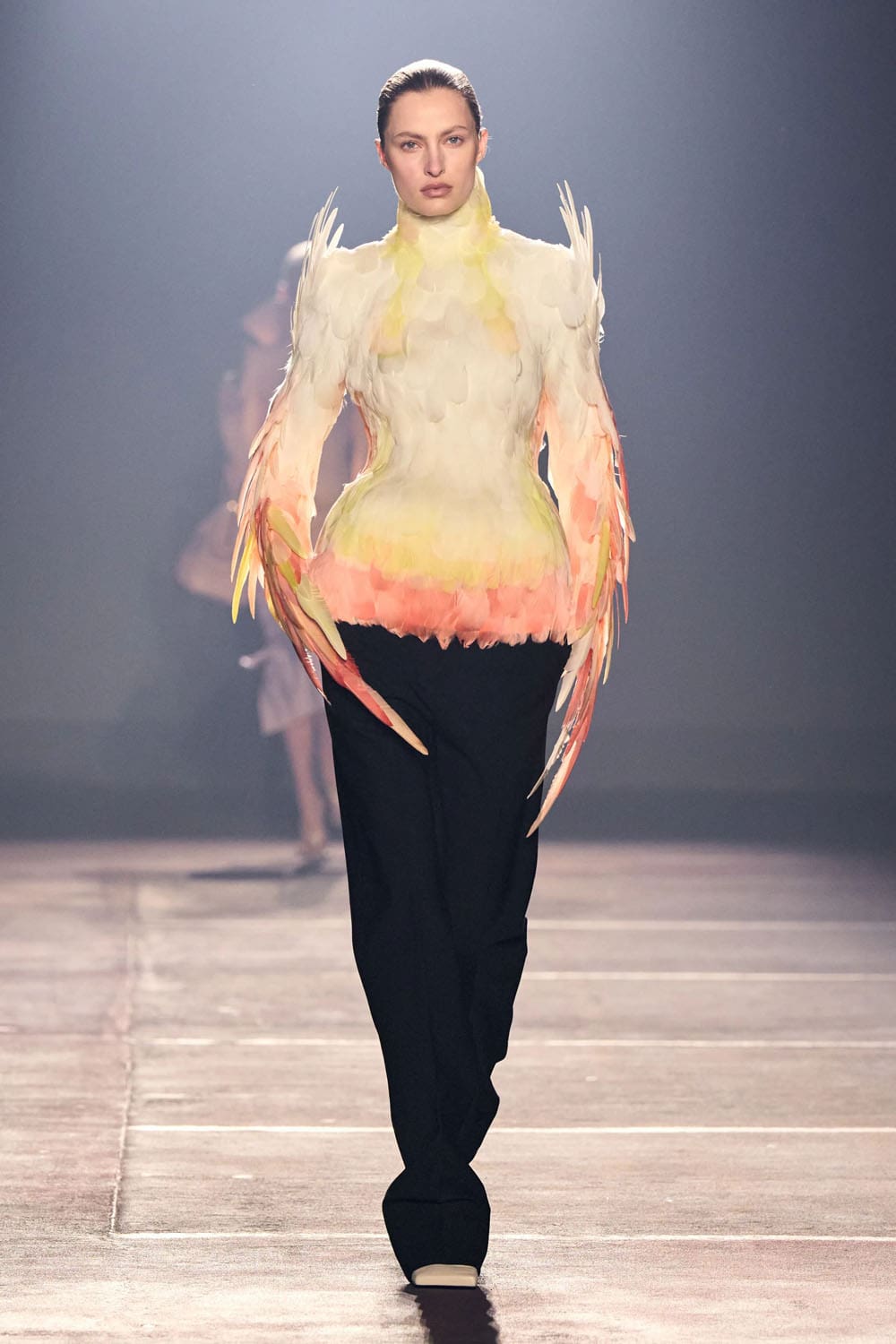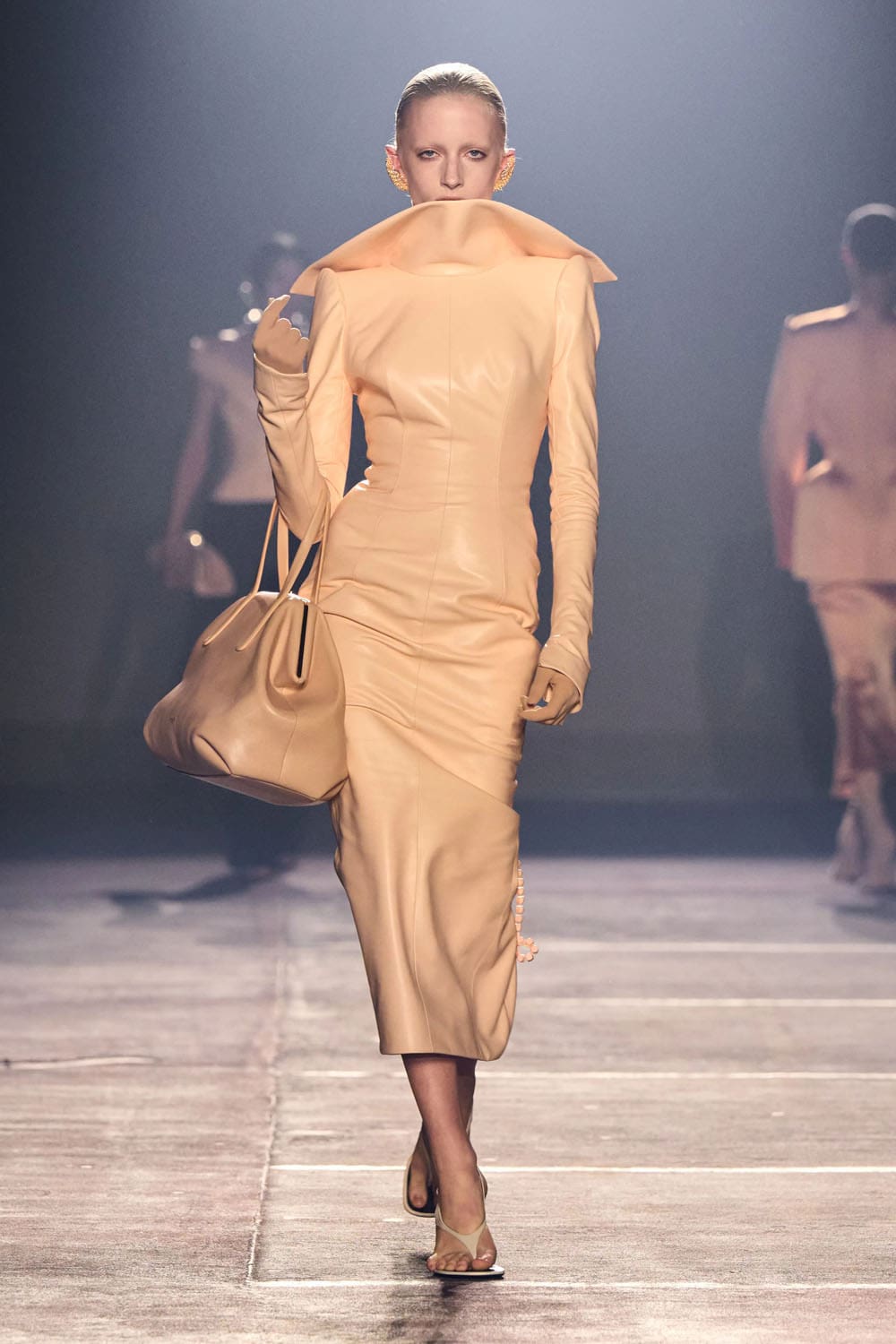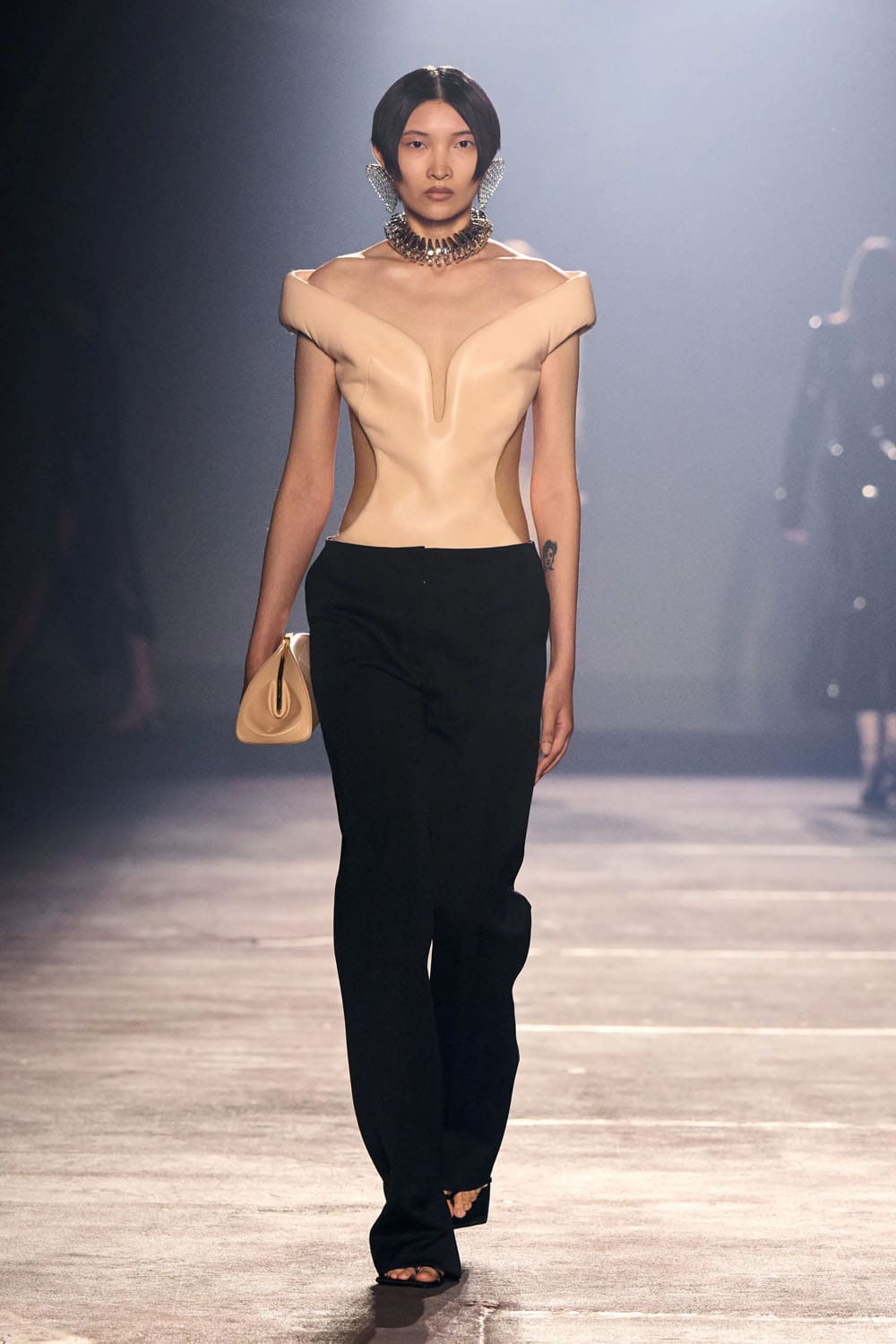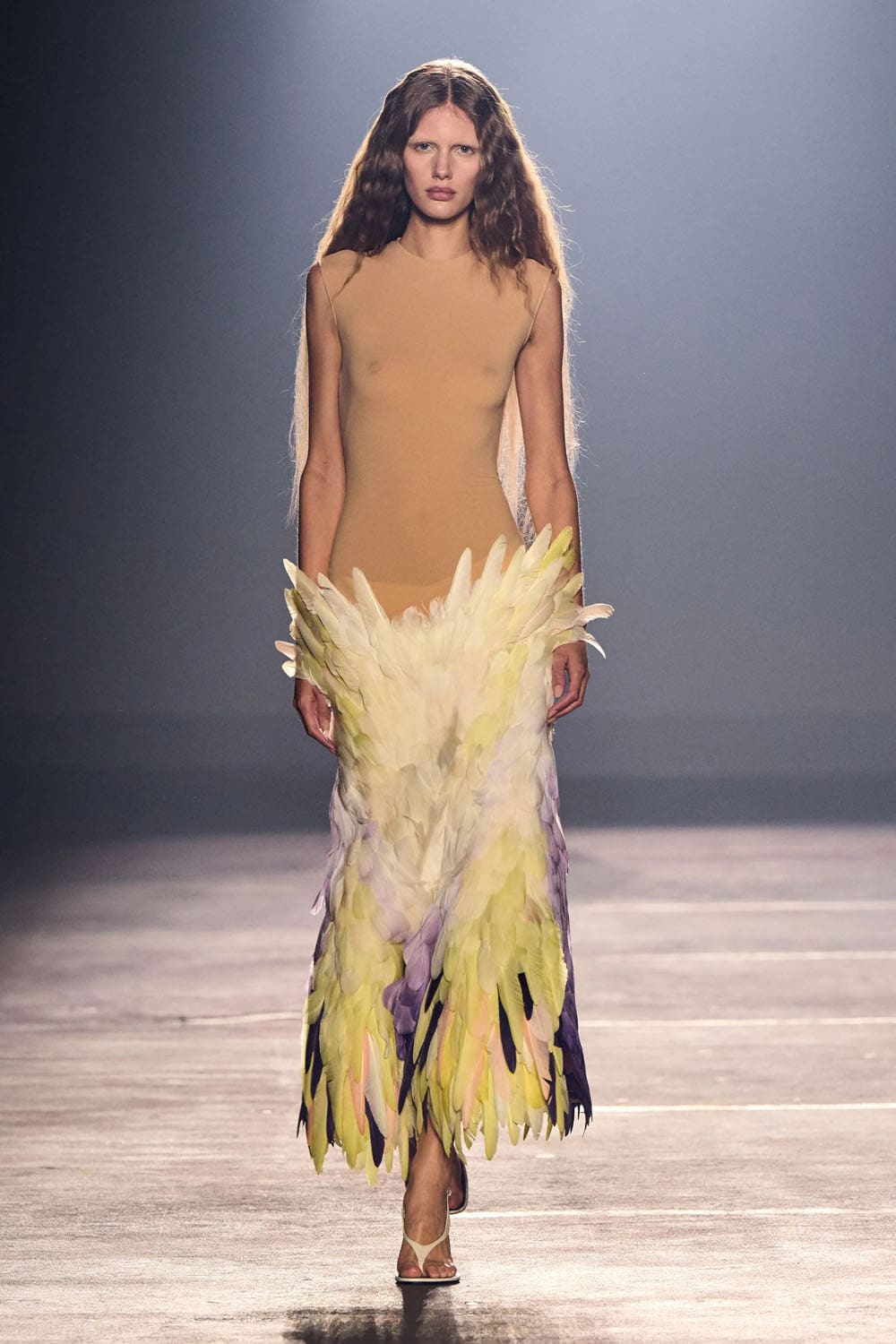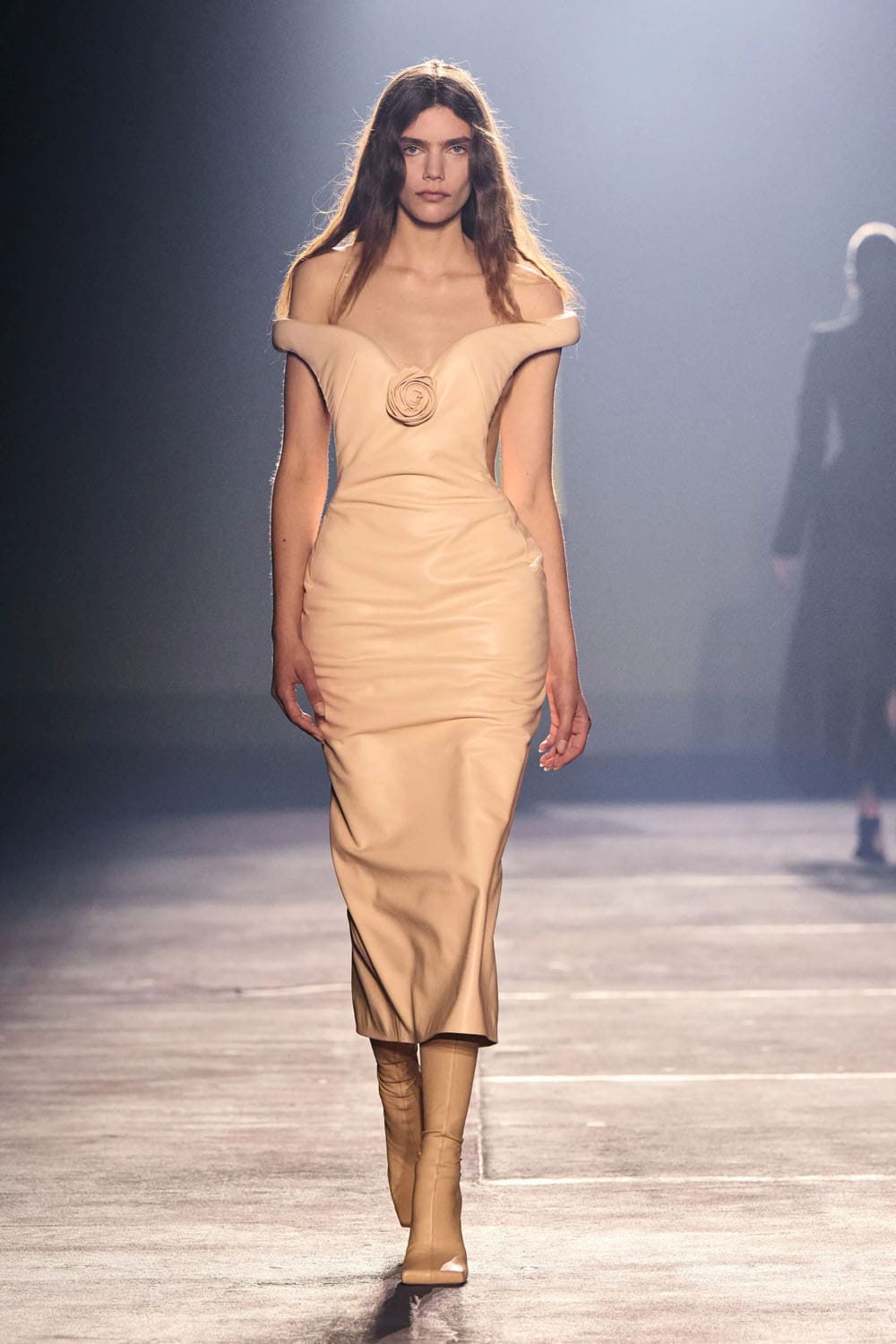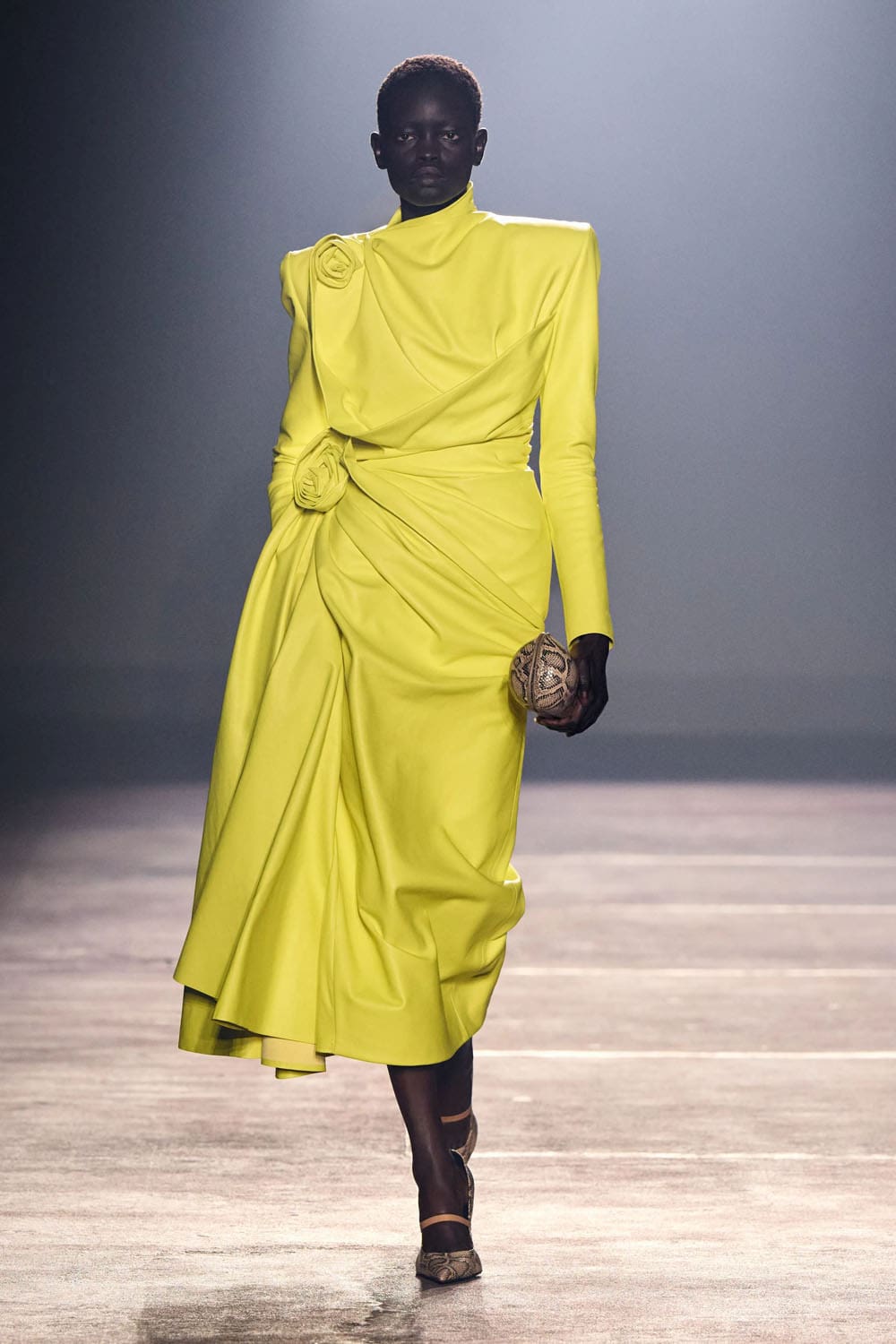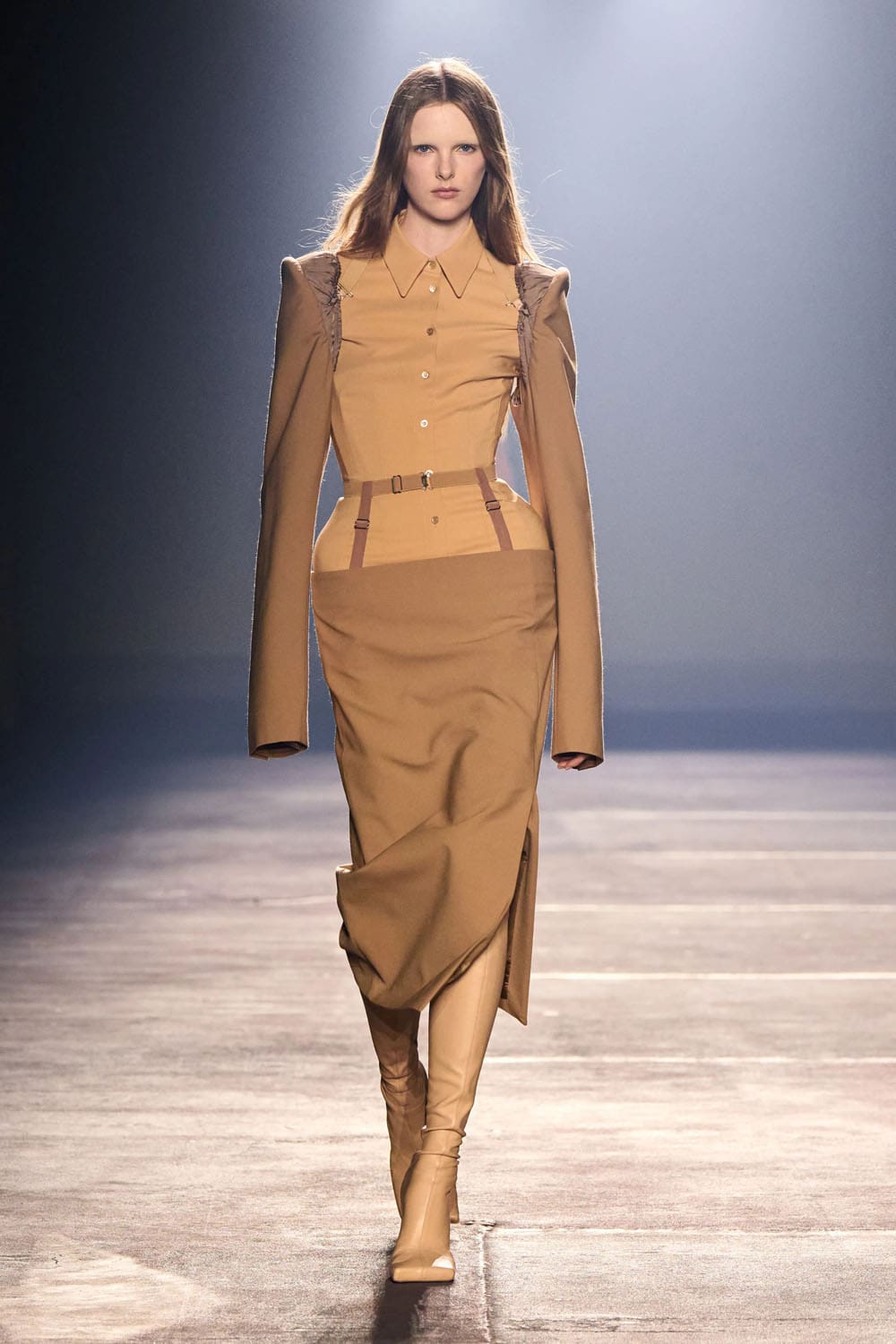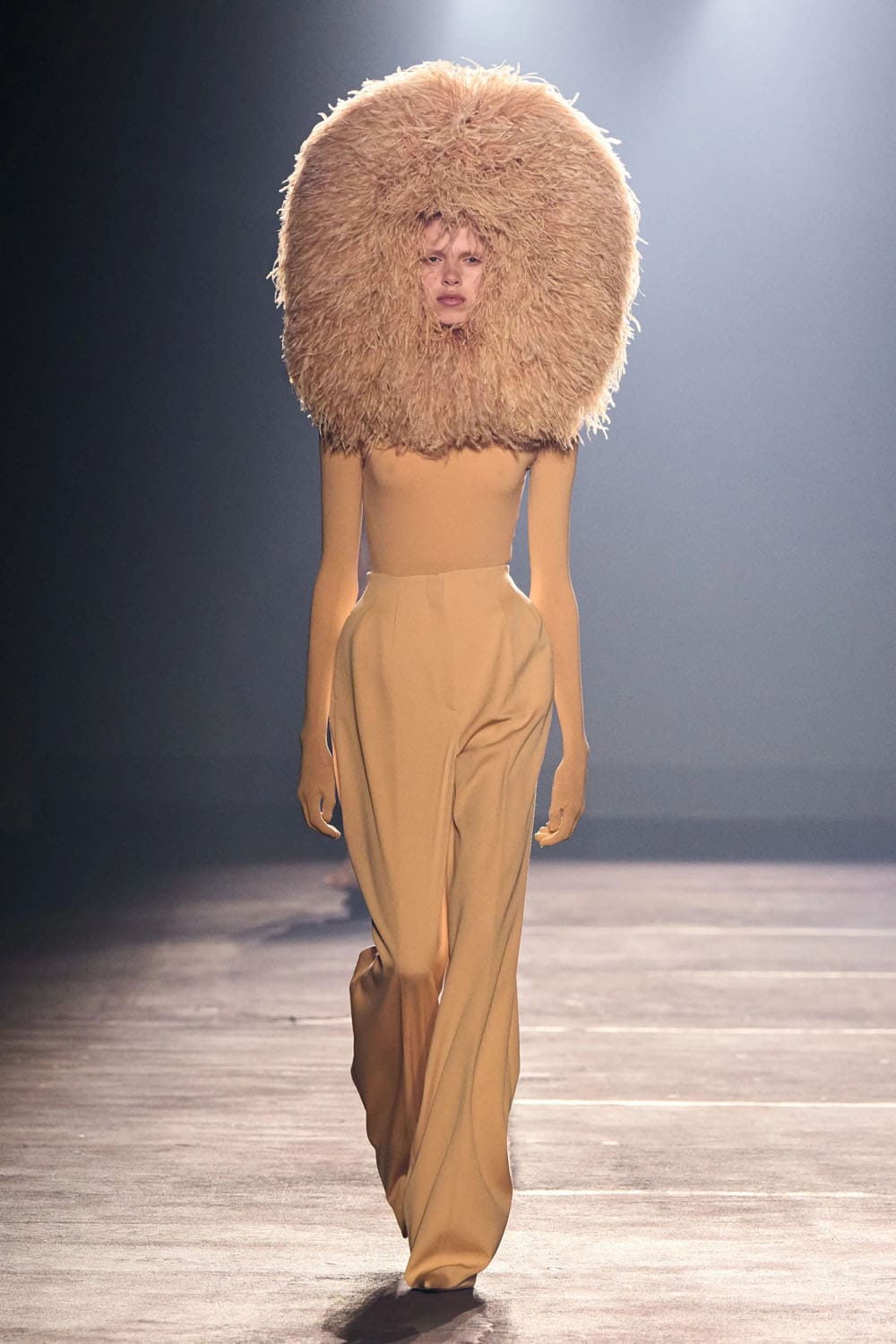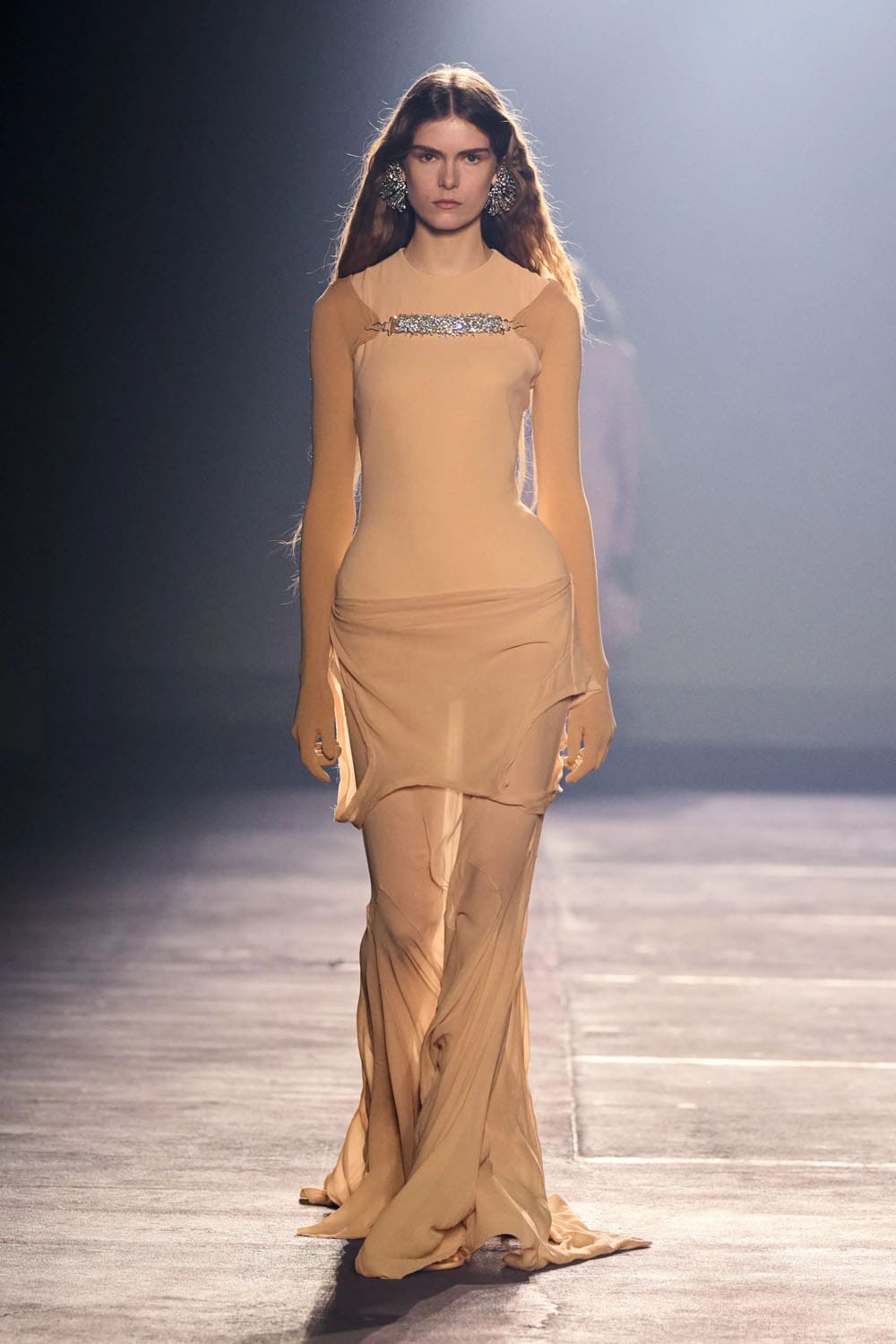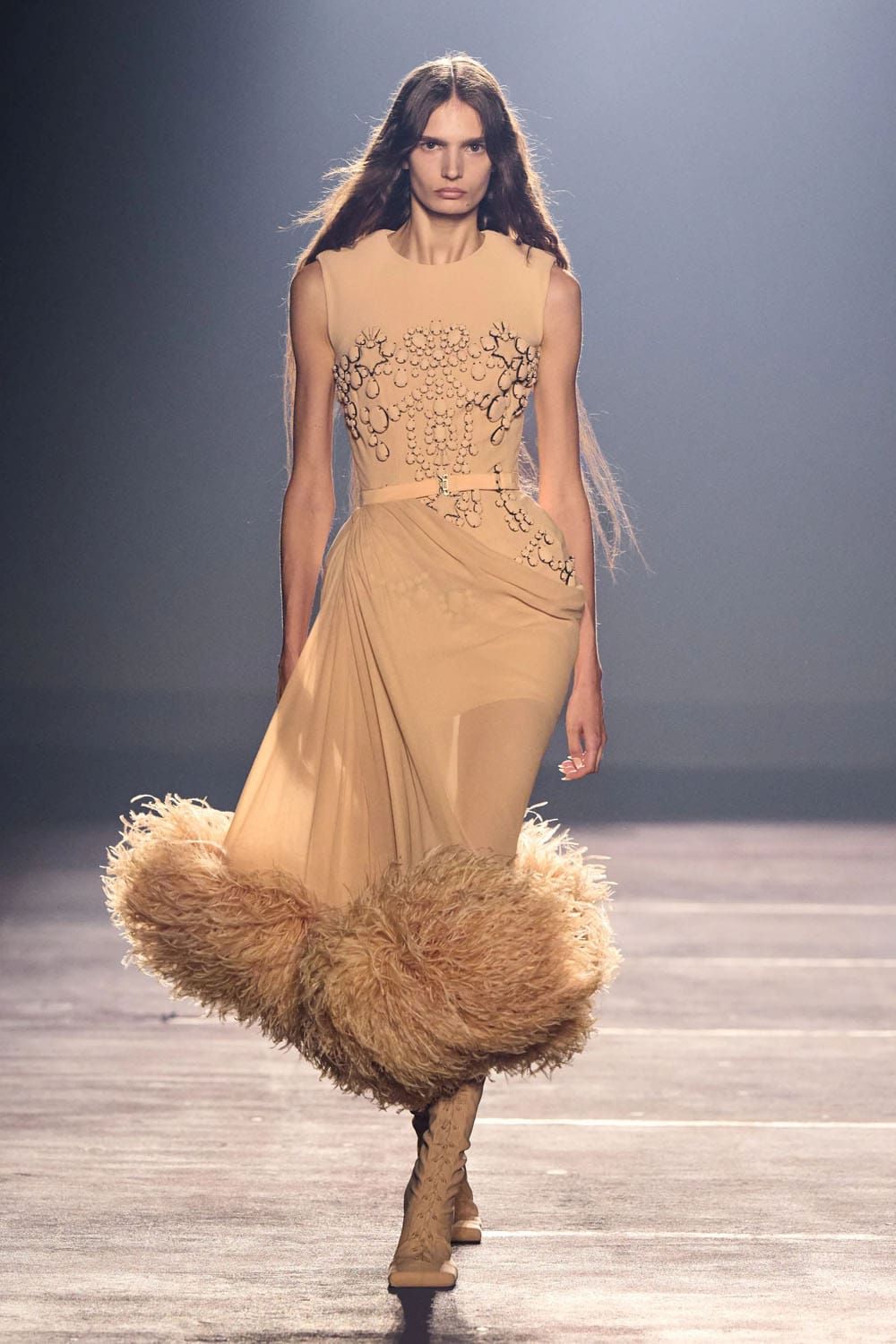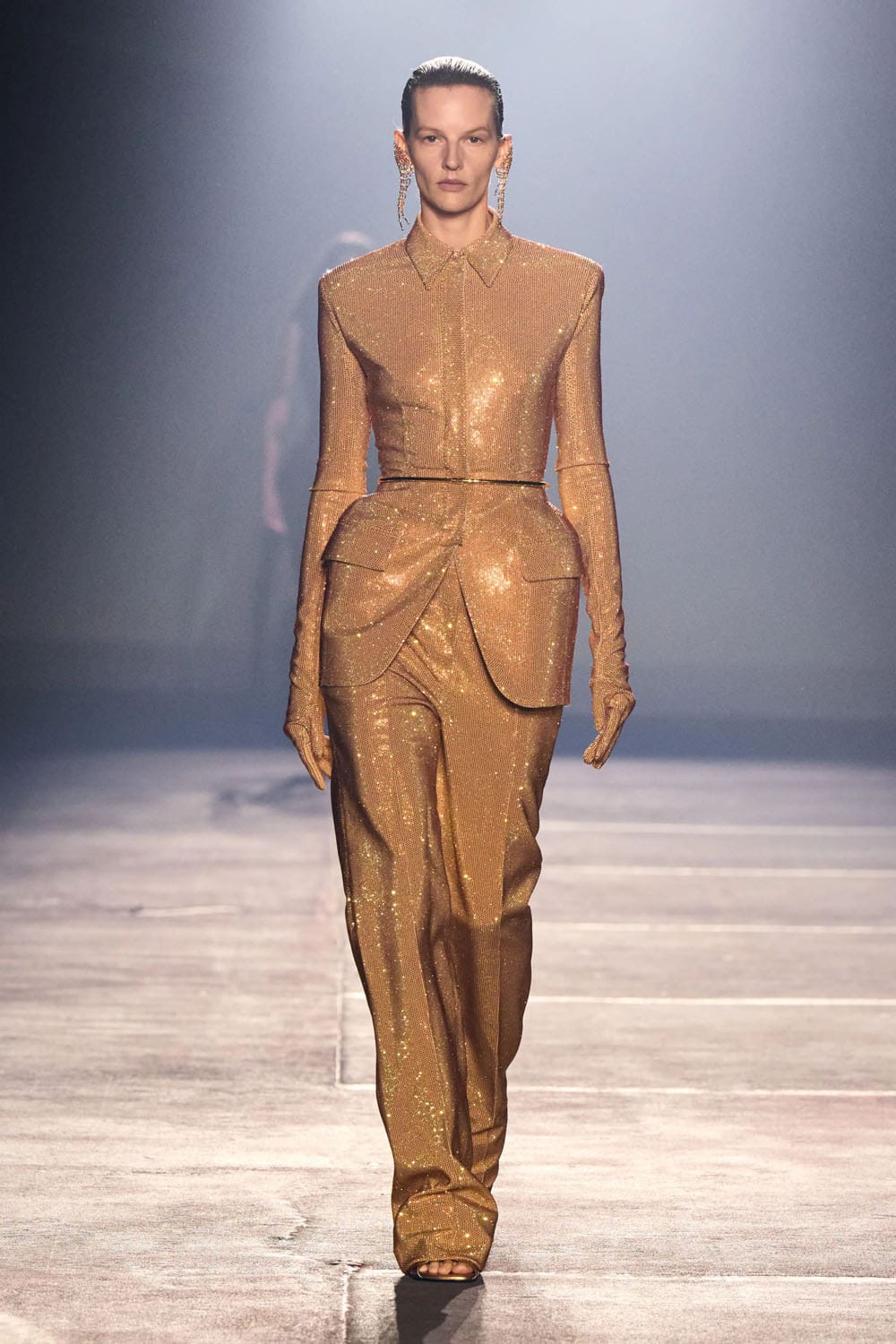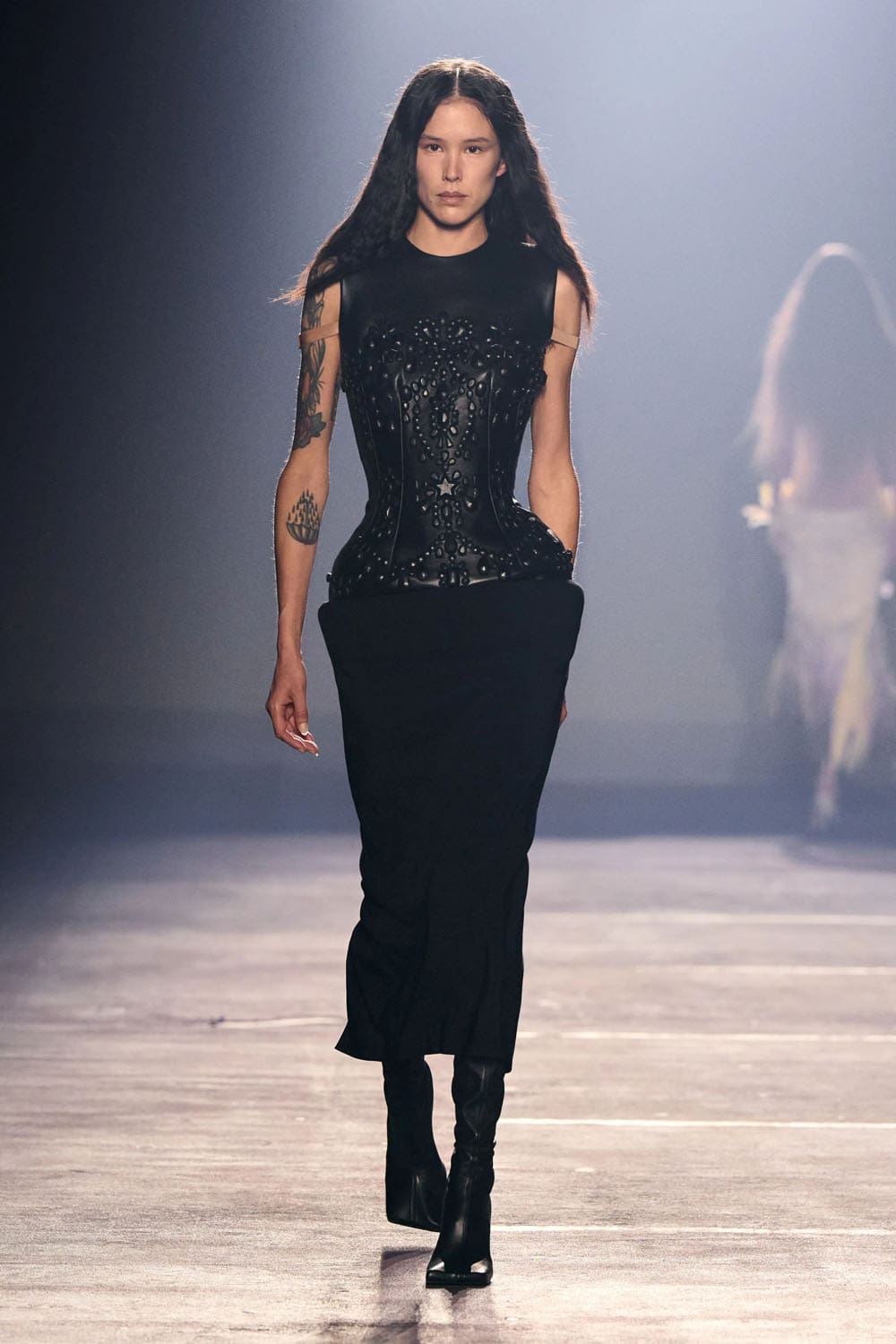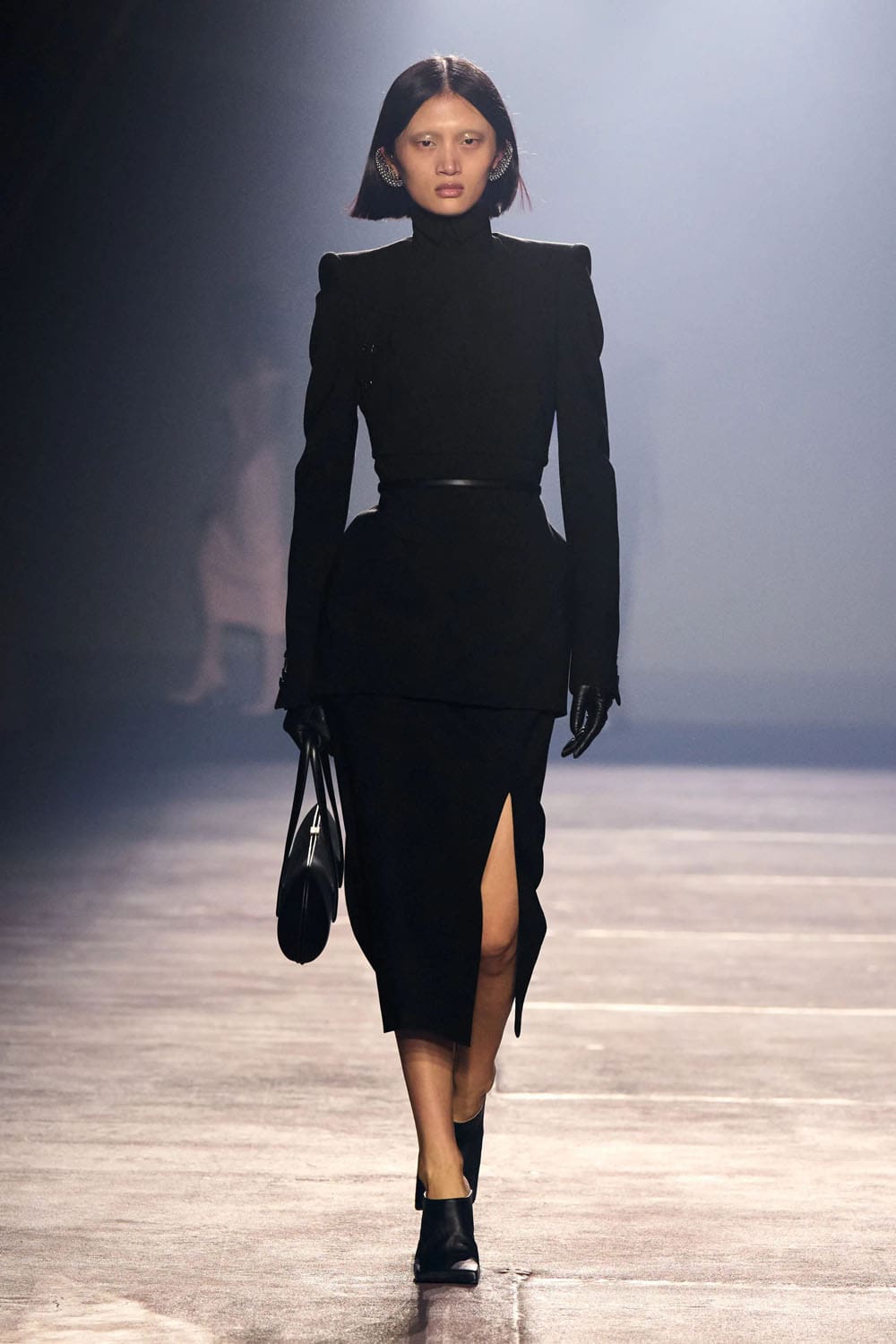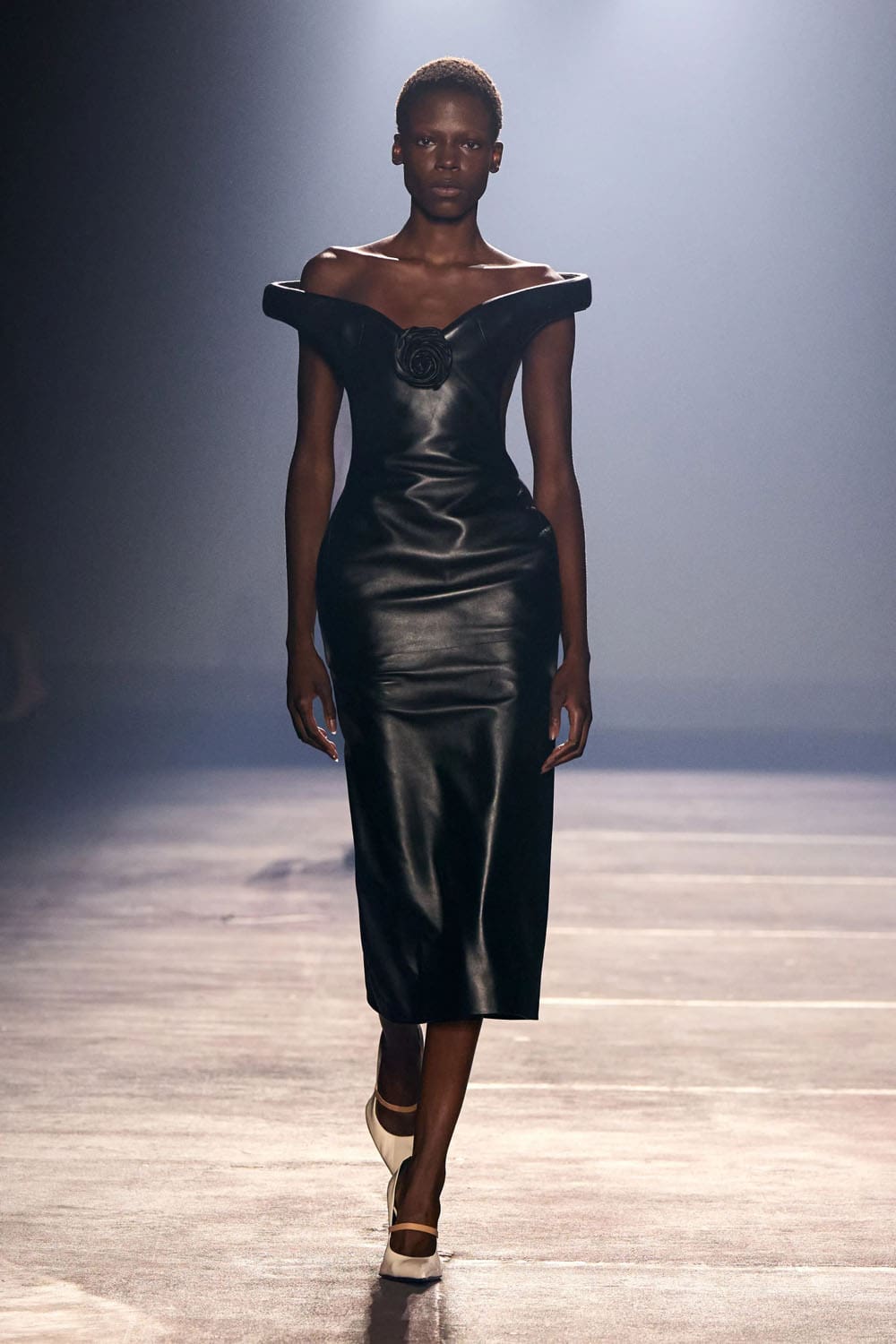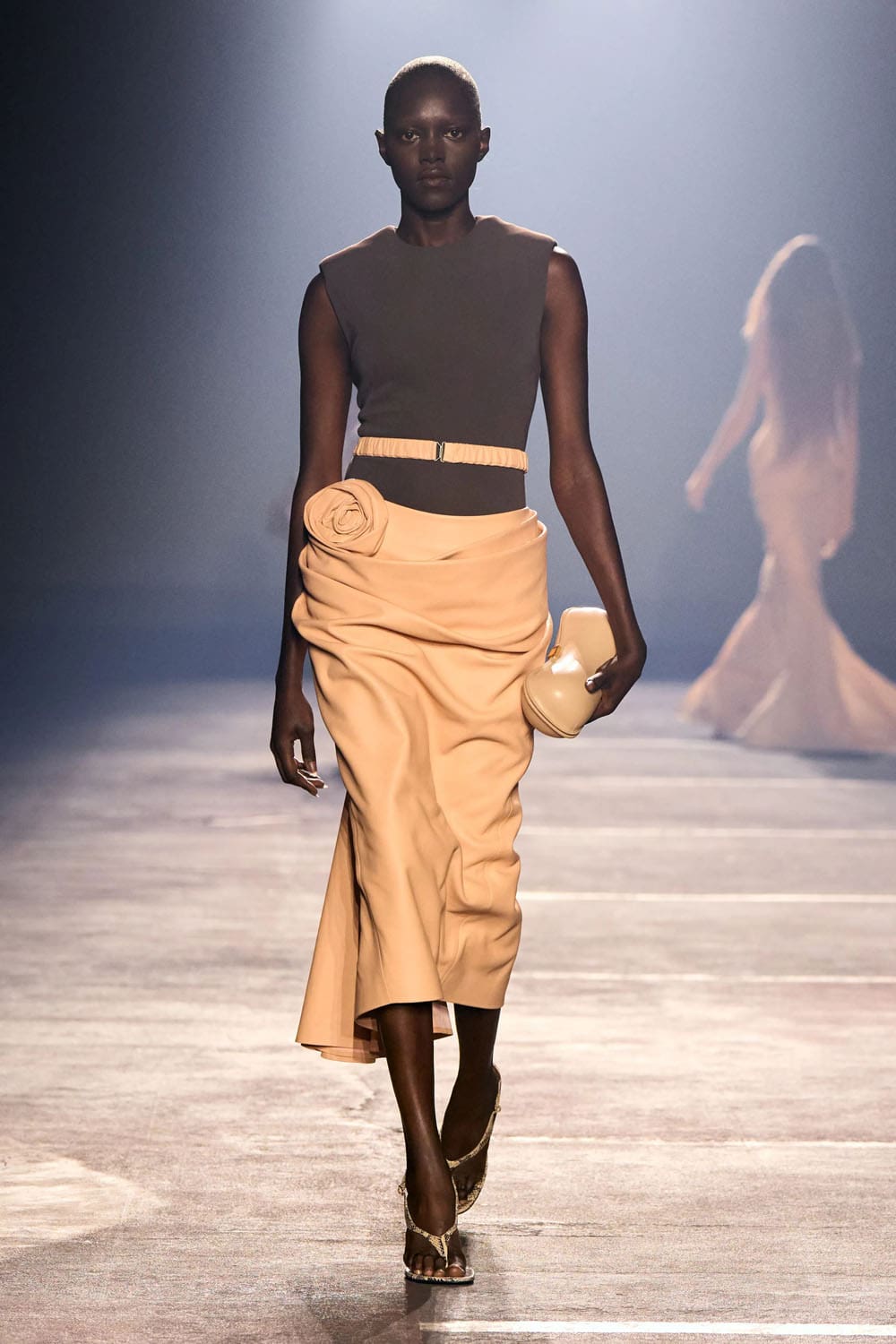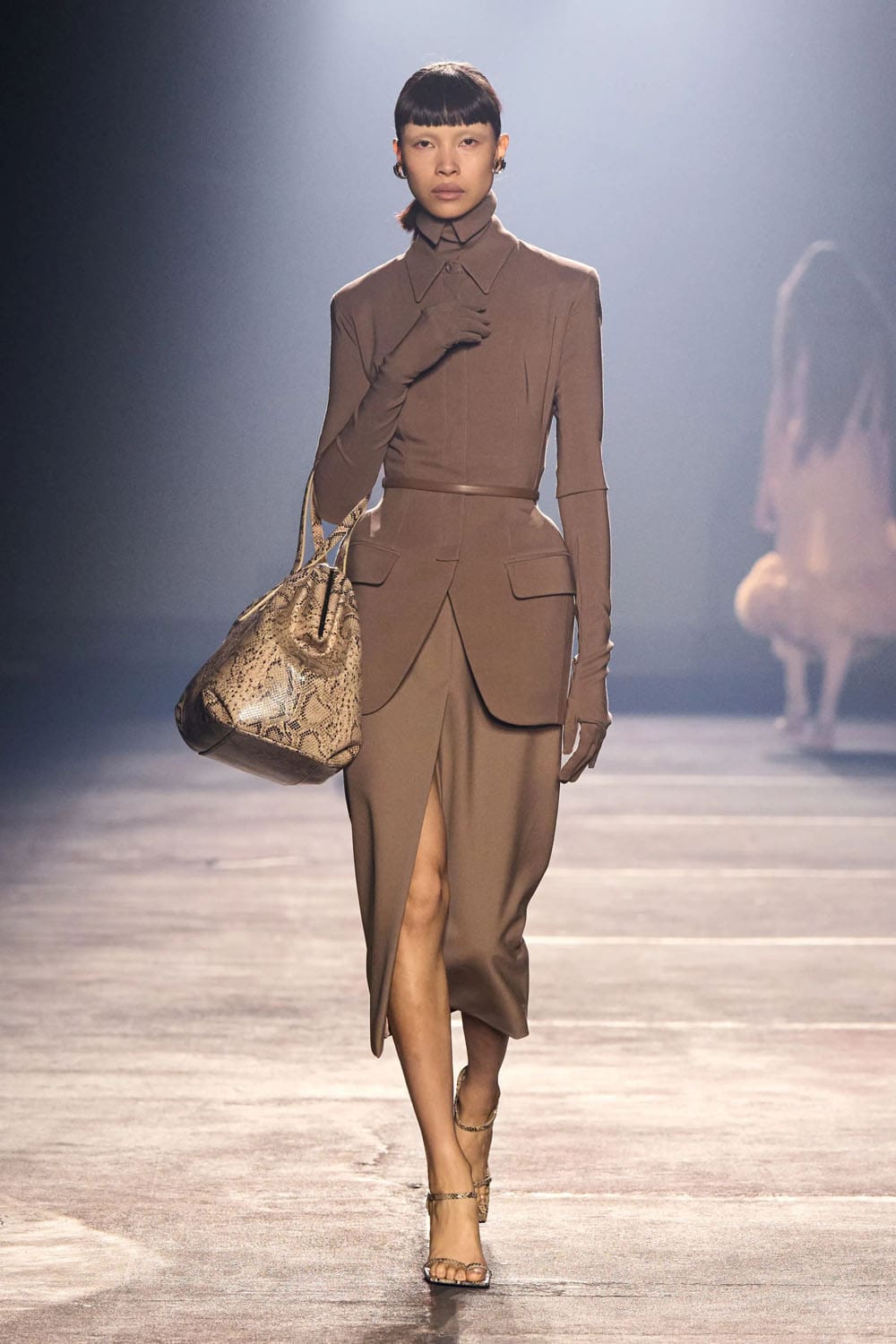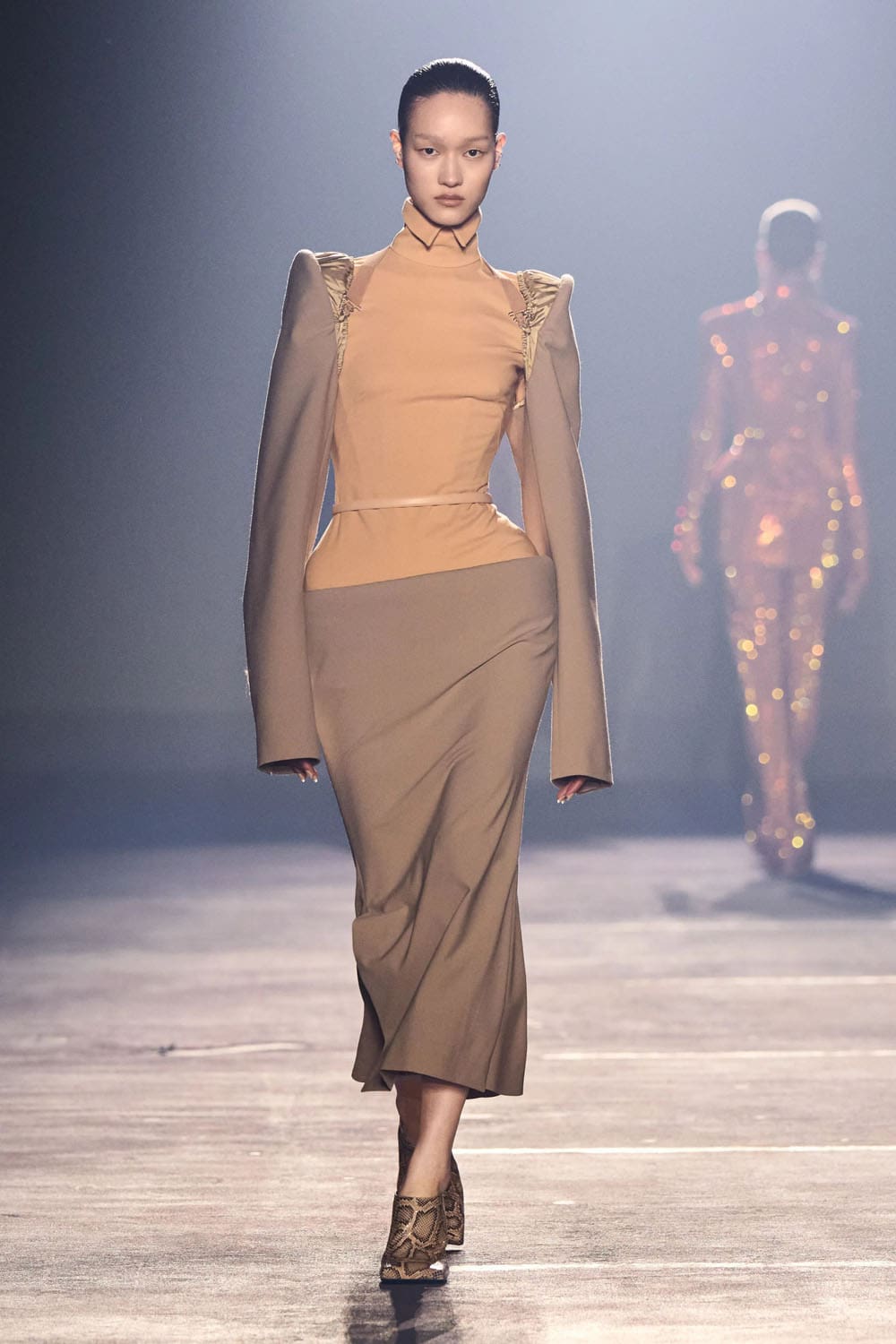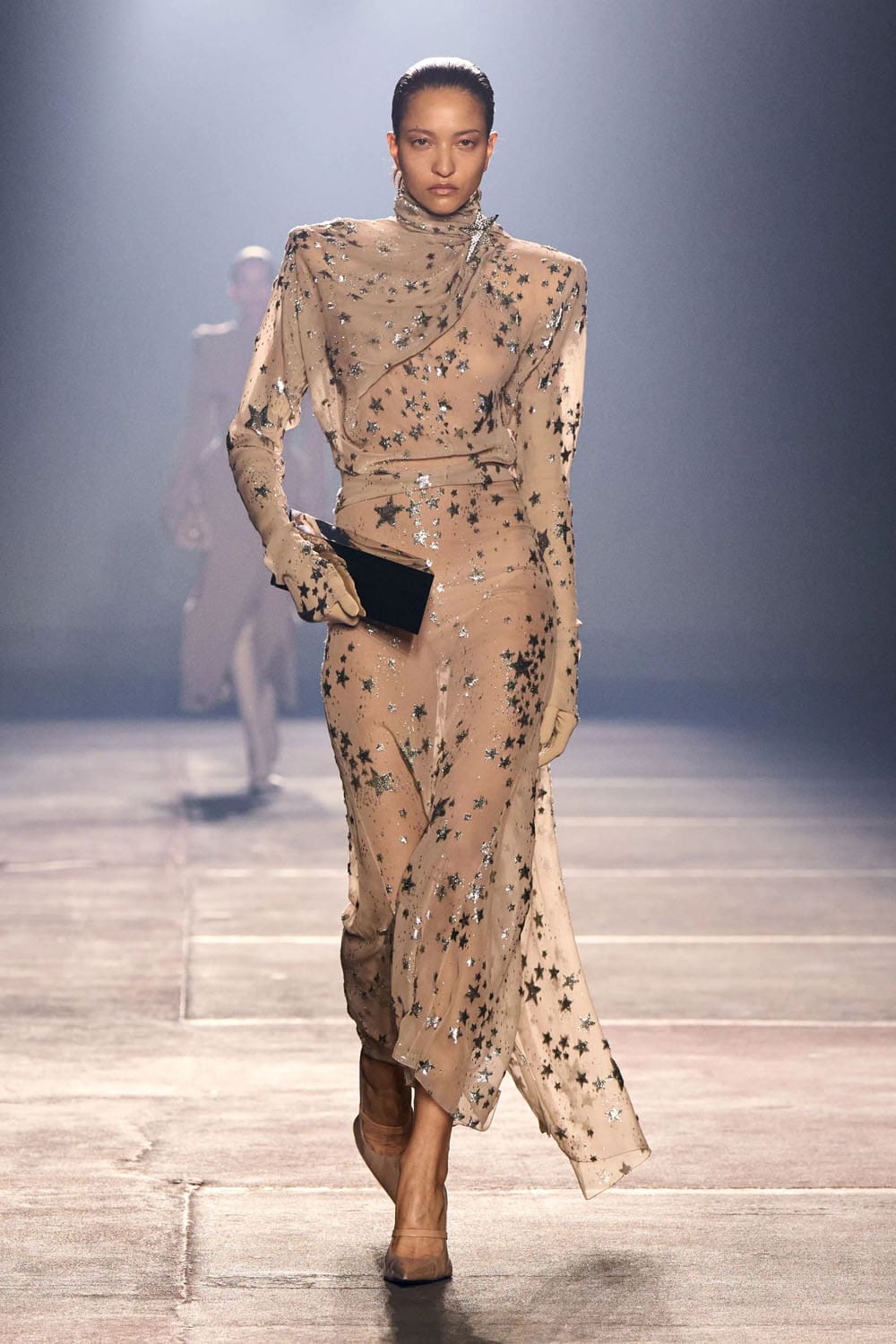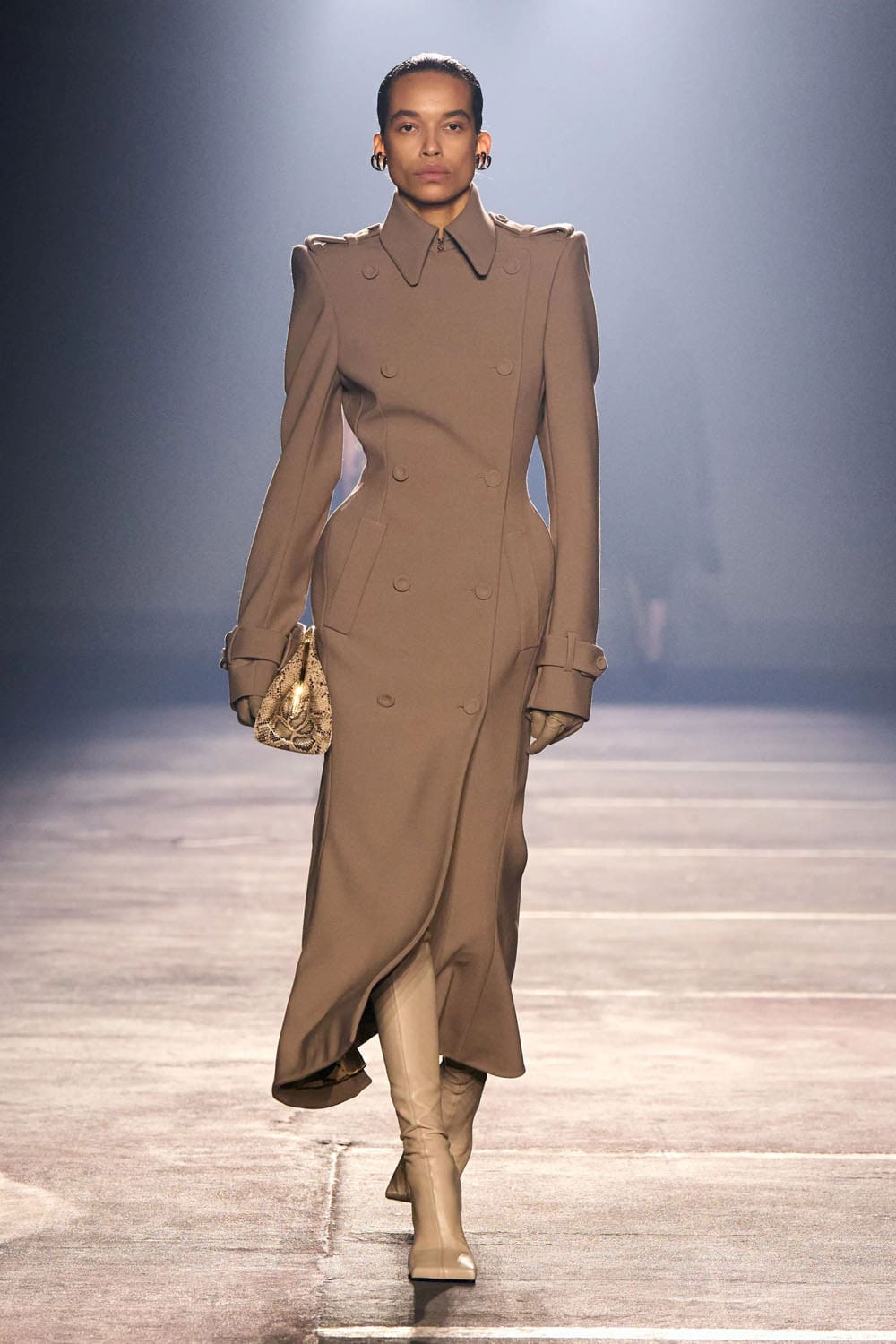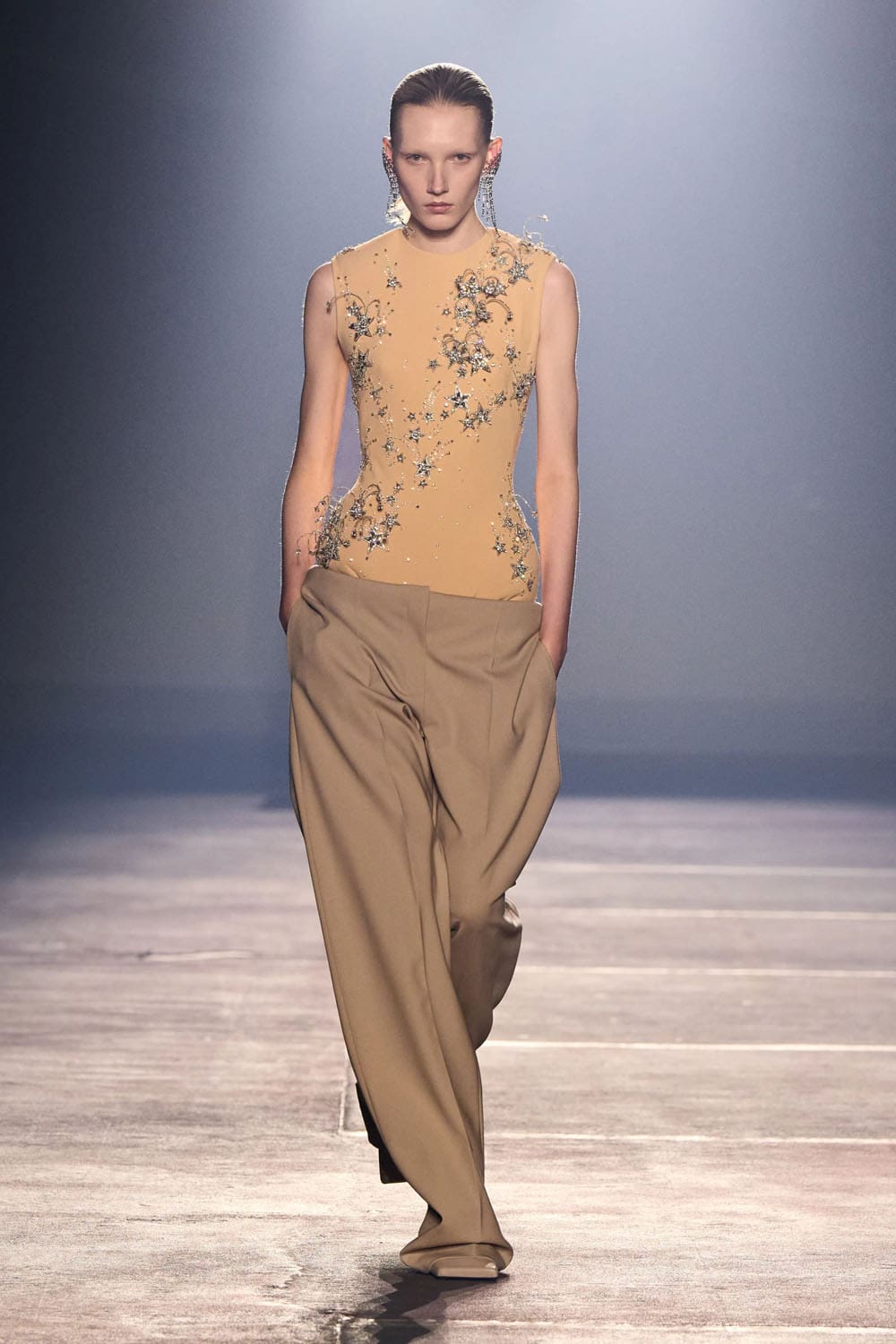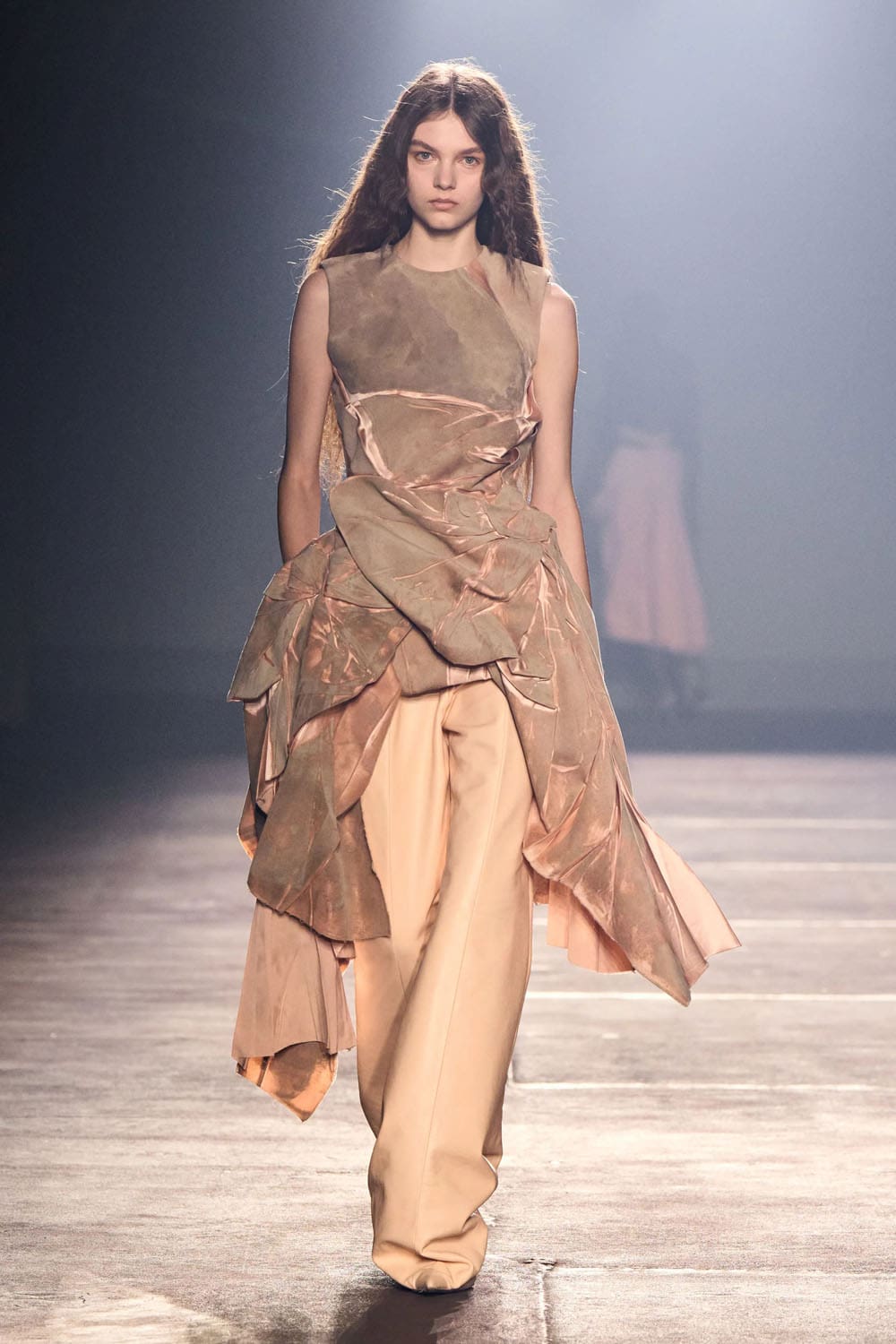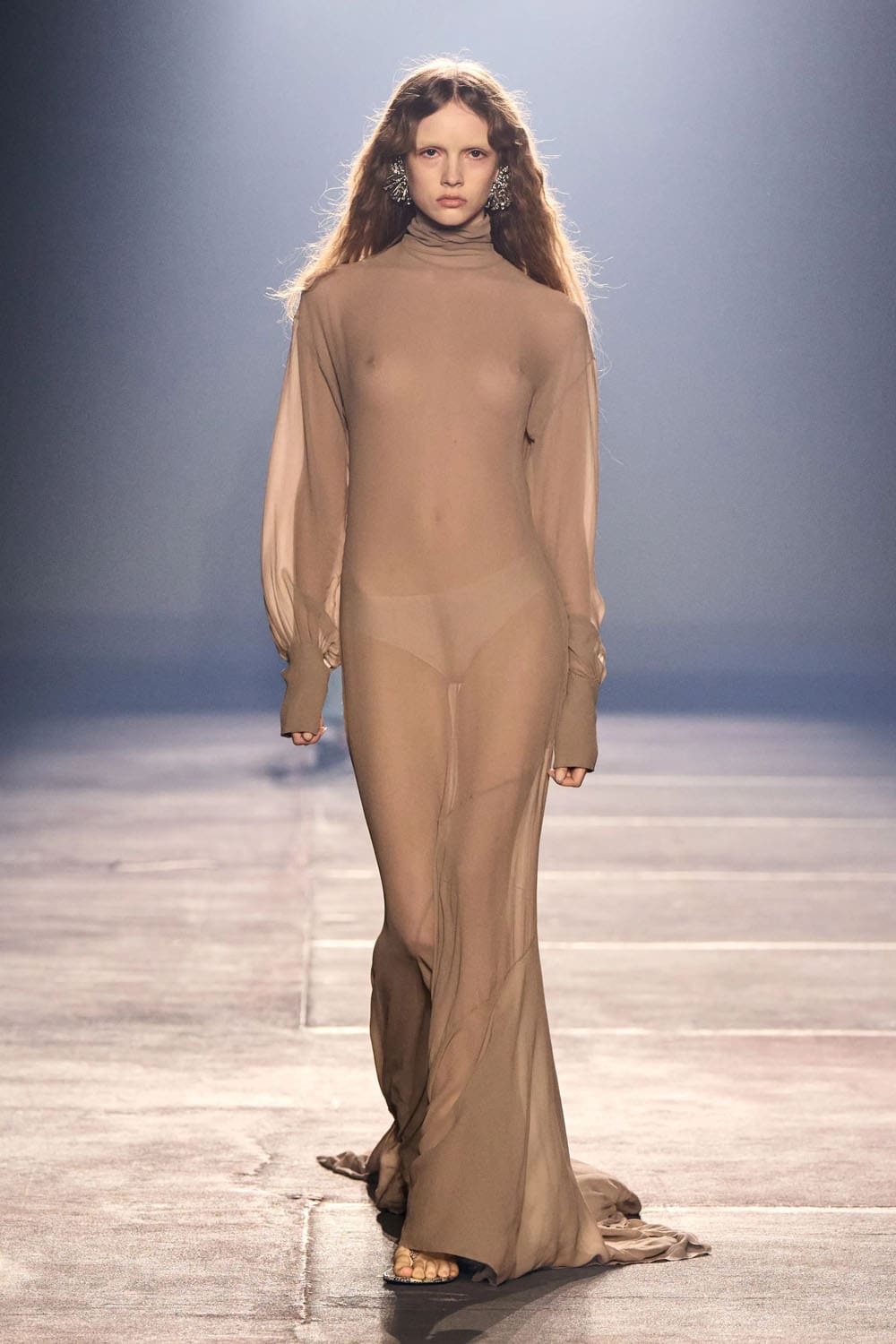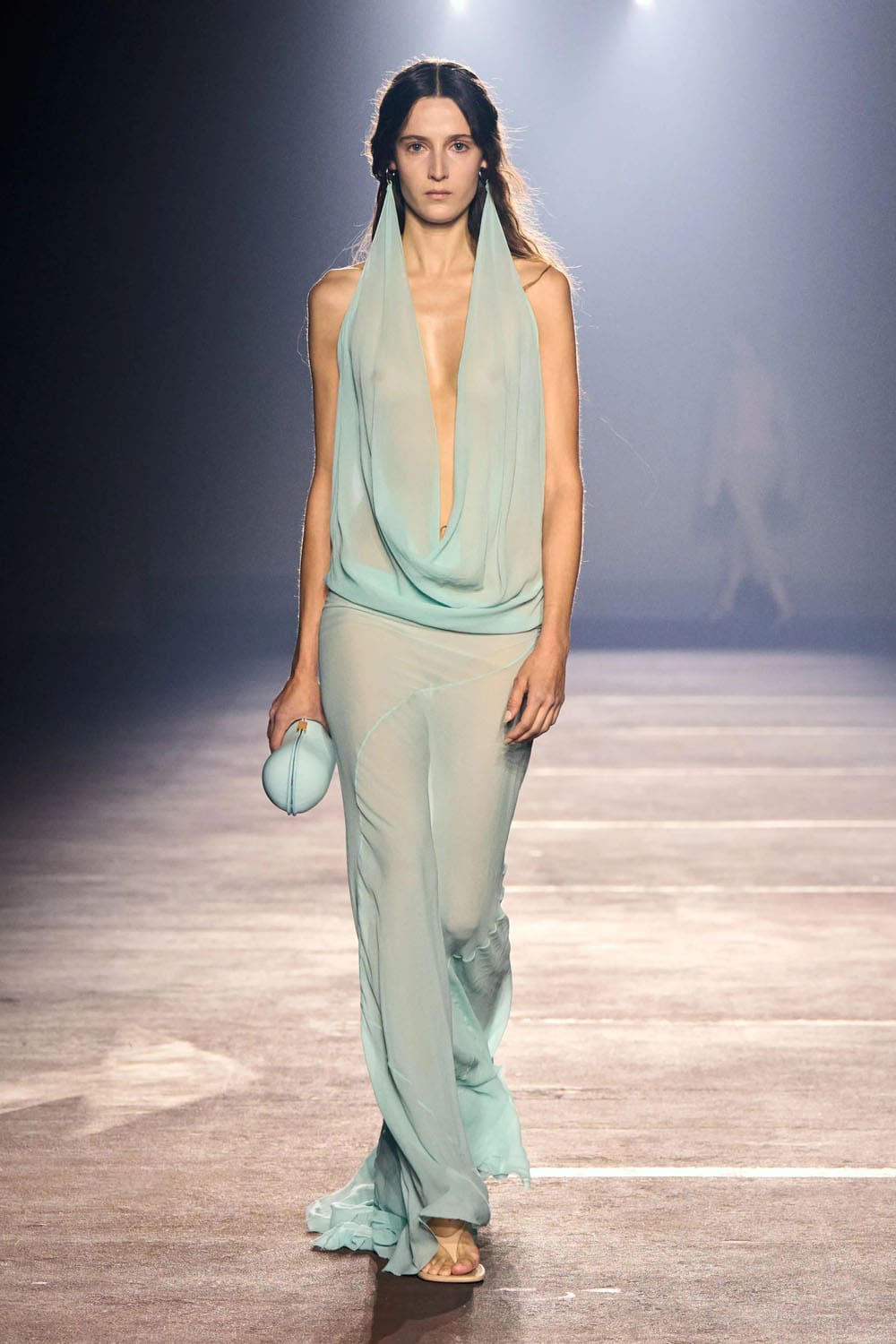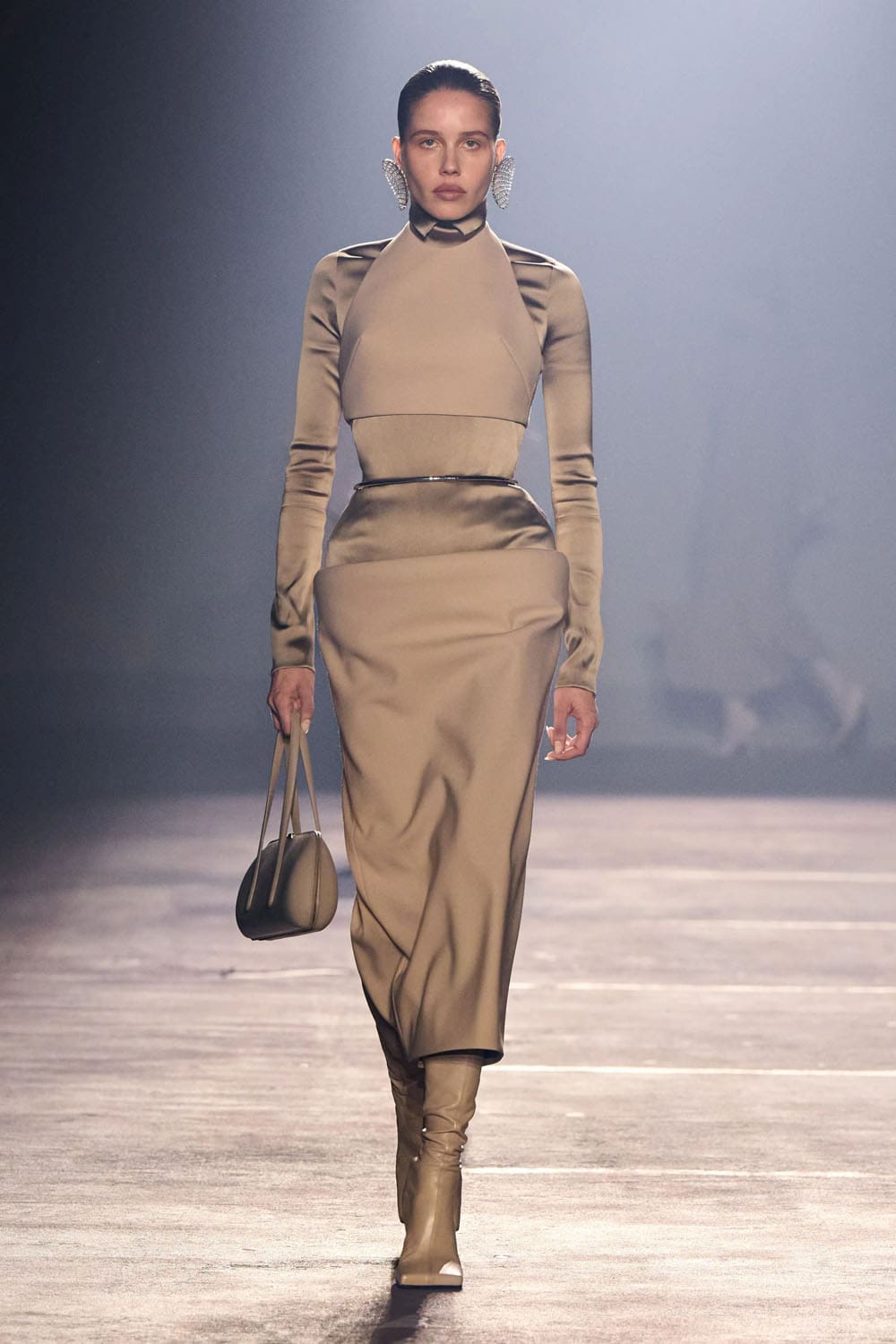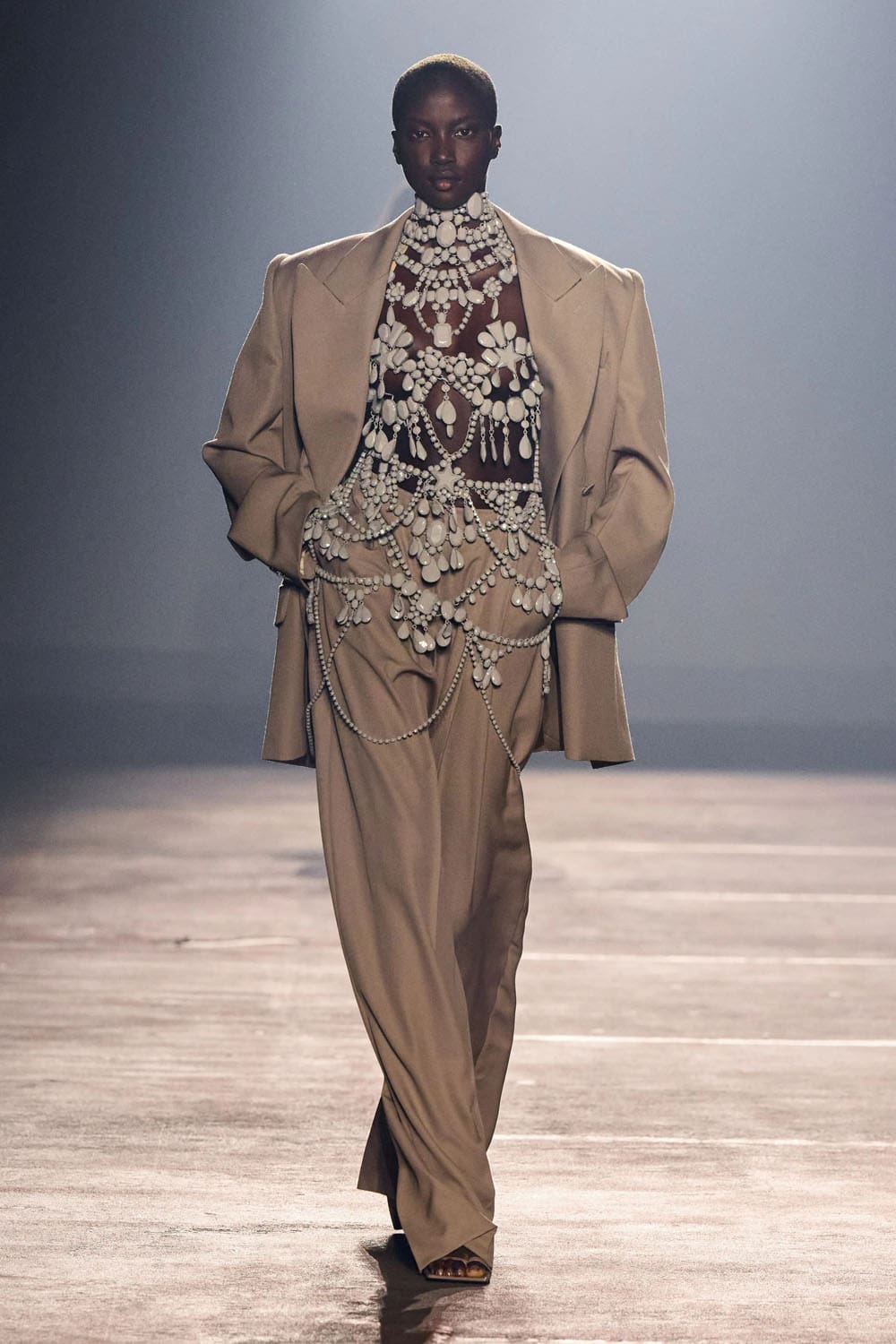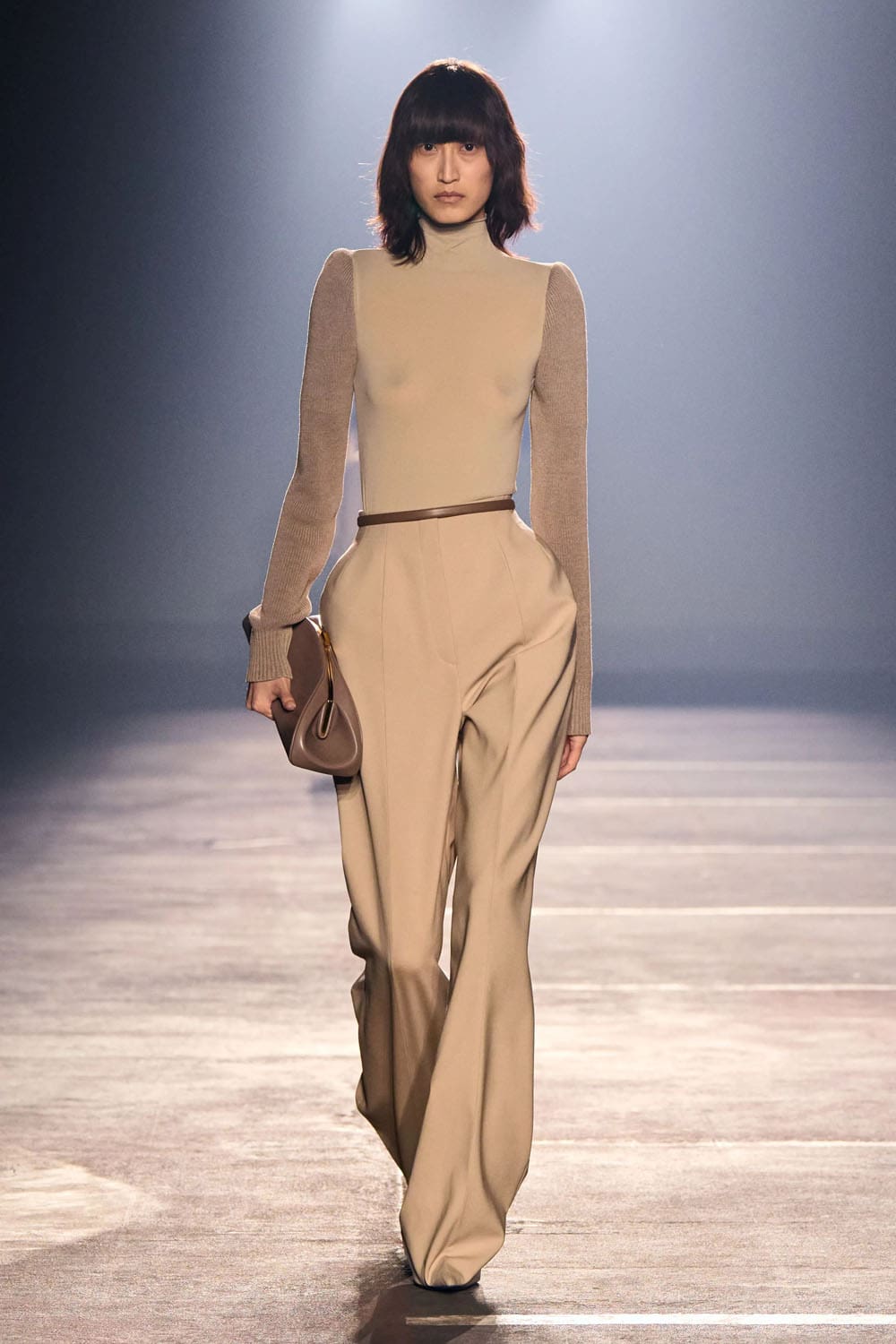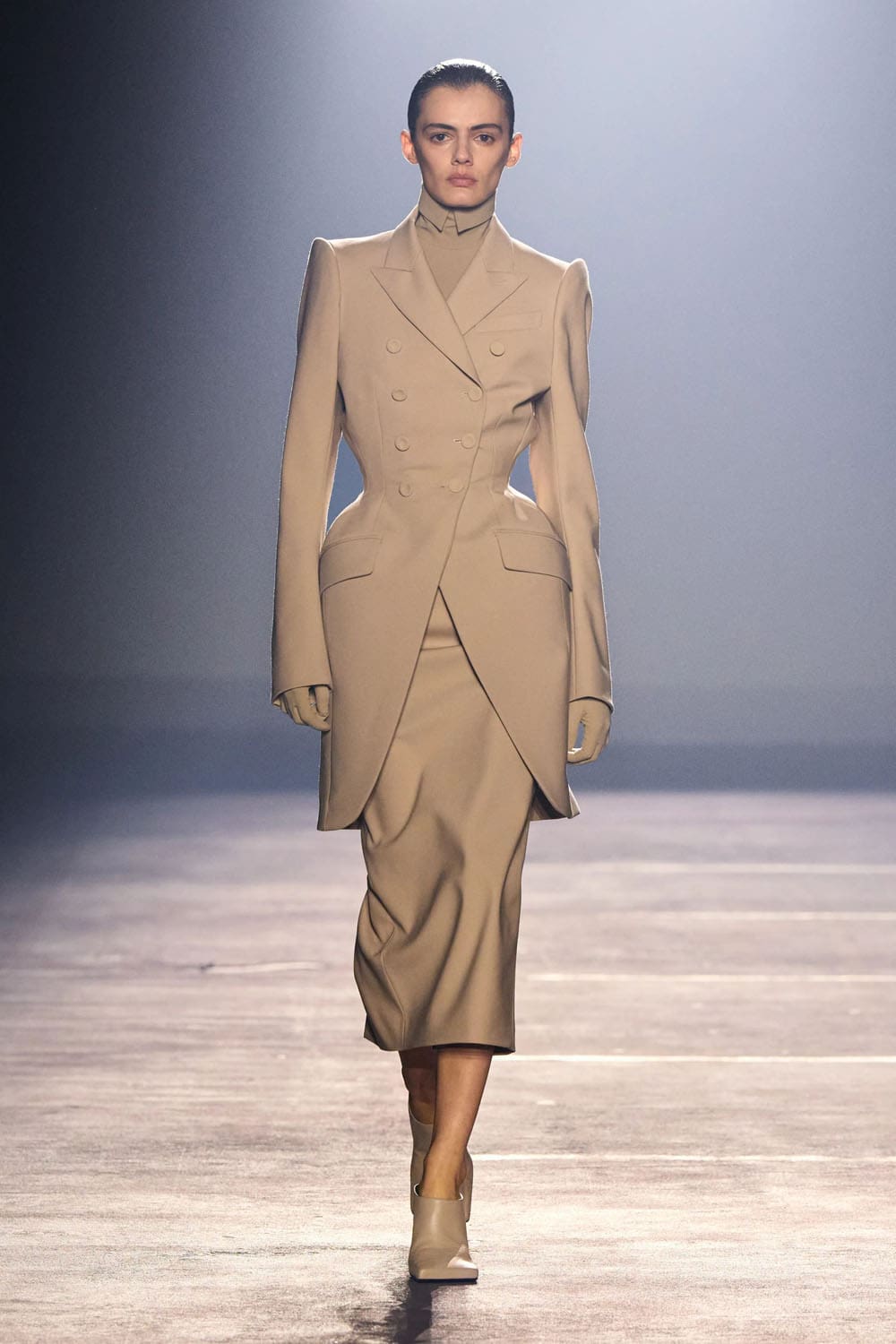Mugler Spring Summer 2026 “New Era” – debut Castro Freitas. Story by Eleonora de Gray, Editor-in-Chief of RUNWAY MAGAZINE. Photo Courtesy: Mugler.
There are debuts that stumble, and then there are those that strike with conviction. Miguel Castro Freitas’s first collection for Mugler—Spring Summer 2026—was the latter. Sharp, structured, and unapologetically intelligent, it marked the precise moment a legendary house turned its next page.
Presented in a brutalist underground car park in Paris’s edgy 11th arrondissement, the venue was a deliberate choice: dark, industrial, and brimming with 1990s Flemish undertones. A nod, perhaps, to Antwerp—where Freitas sharpened his design instincts—and to the late ’90s conceptual shows that blurred fashion and art with unapologetic clarity.
But the space wasn’t the star. The collection was.
From the moment the first look walked out, it was clear this wasn’t a hesitant first draft. Castro Freitas came prepared. He didn’t just revisit the Mugler archives—he understood them. He translated Thierry Mugler’s signature hourglass tailoring, the power shoulders, the hips, the unapologetic sensuality—into a modern vernacular of 2025. Gone were the hyper-chromatic excesses. Instead, Freitas chose a subdued palette: concrete grey, cream, and powdery beige, reminiscent of old French face powder. It was not just a nod to the past—it was a deliberate resetting of tone. Welcome to Mugler’s beige era. And yes, it works.
This wasn’t nostalgia. It was restoration.
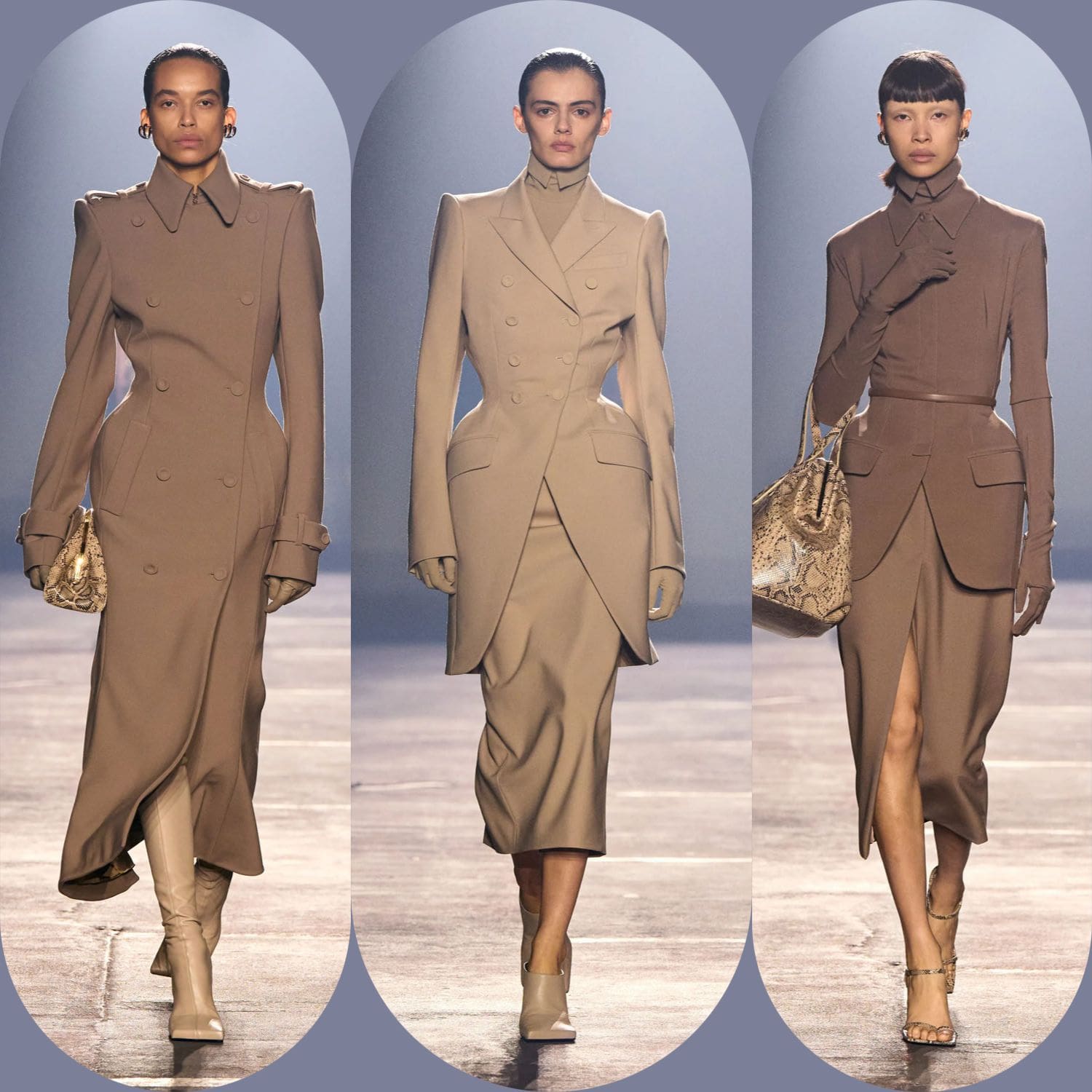
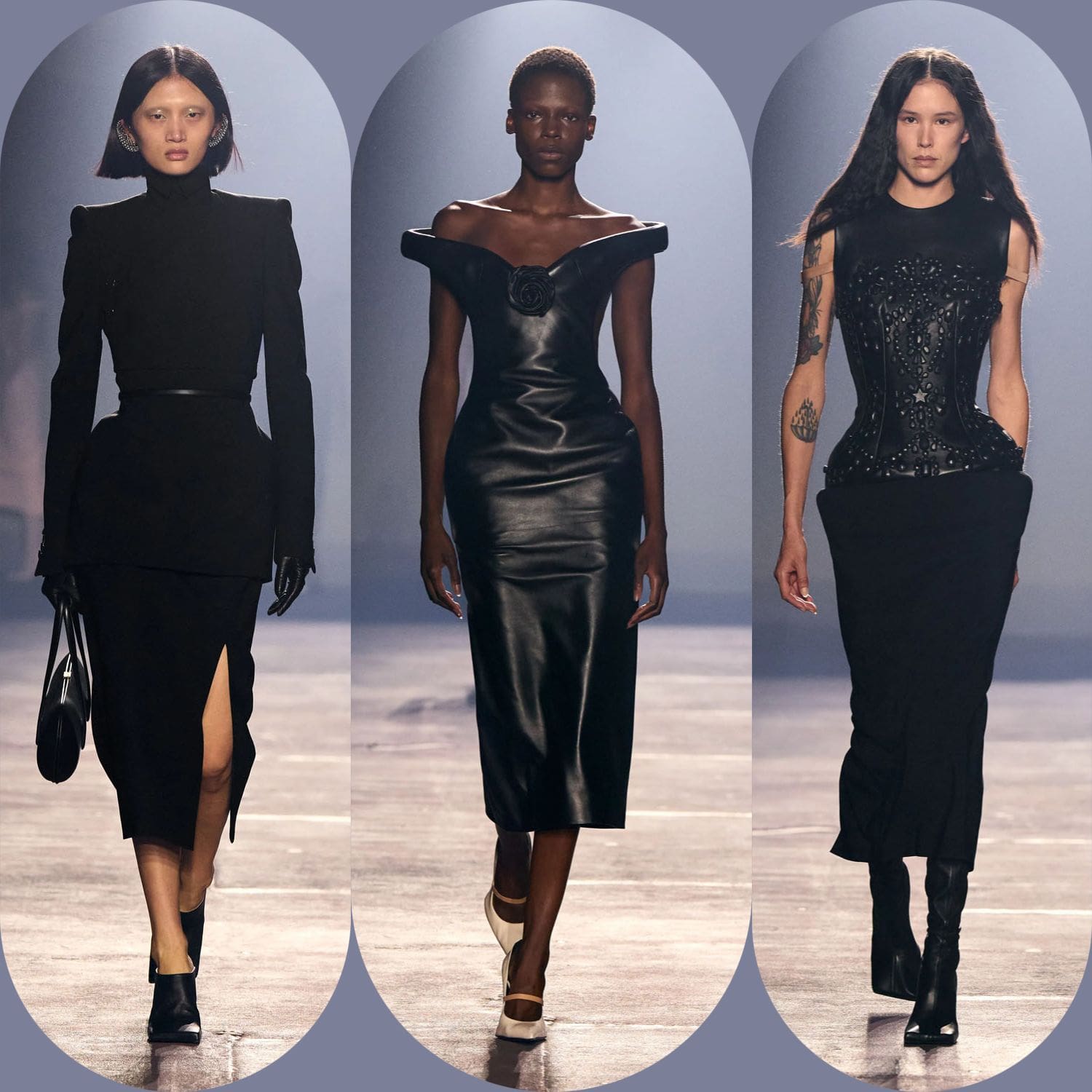
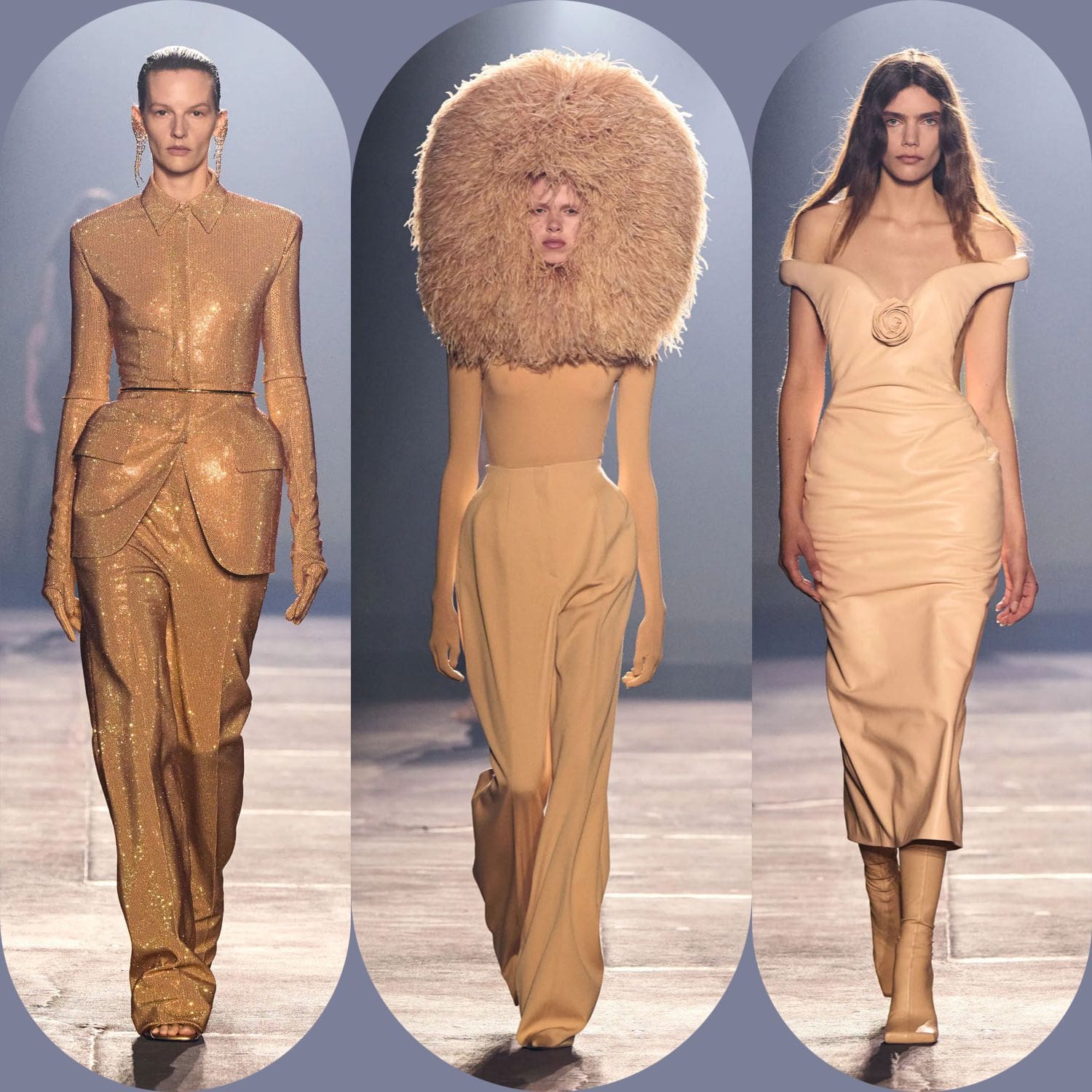
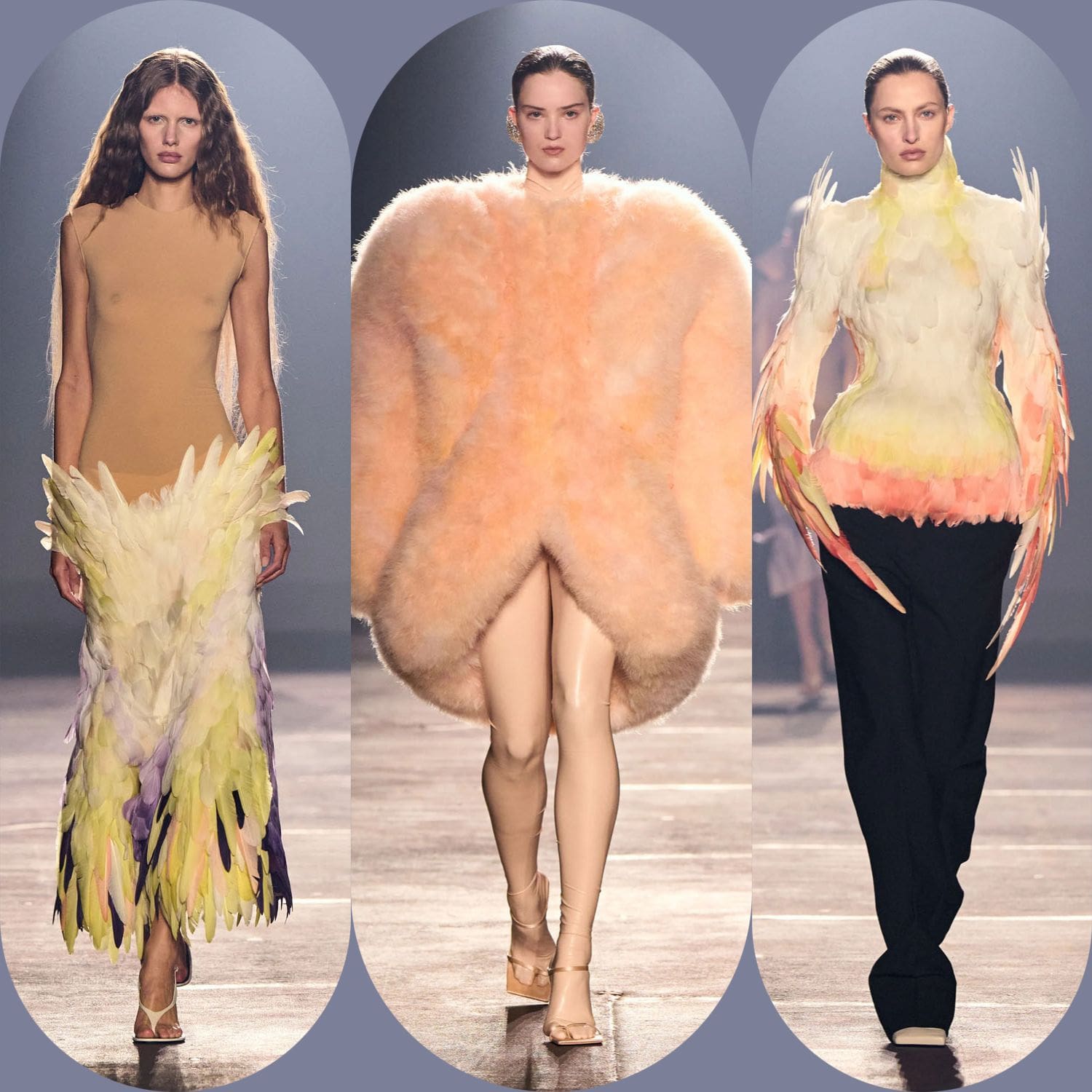
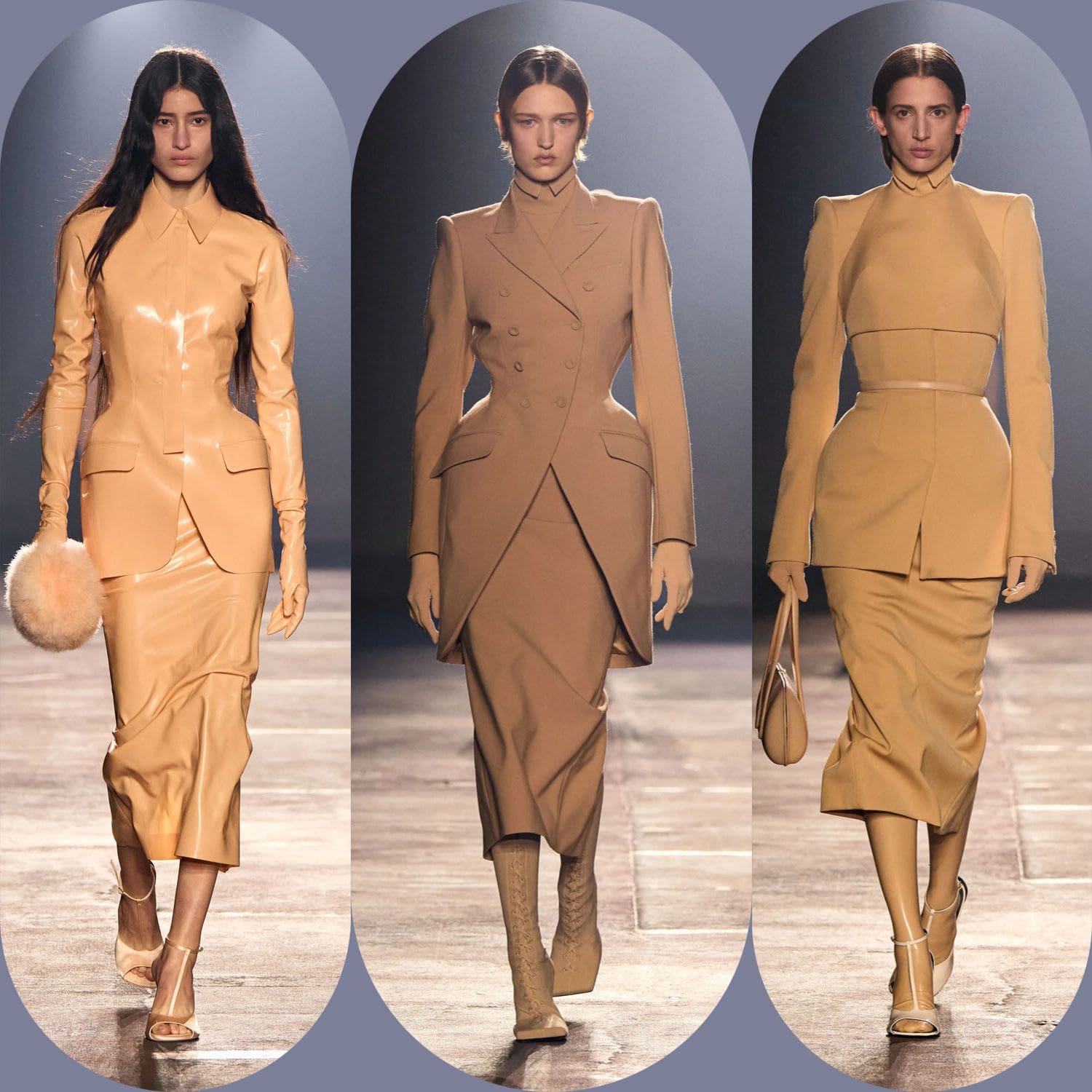
Freitas leaned into the house’s once-revered artisanal craftsmanship, bringing back handwork with a modern lens: jeweled bodices, but matte; feathers, but sculpted; a 1940s-inspired marabou chubby coat, but drained of excess. Think Joan Crawford in Mildred Pierce, passed through a Belgian filter. A rosette motif bloomed on black leather with a neckline inflated like an architectural gesture—somewhere between defiance and devotion.
There was no mistaking the cinematic influence. Freitas openly acknowledged that he found his framework in the Golden Age of Hollywood, yet the results were anything but costume. These were pieces for women who don’t play dress-up—they command attention. Particularly memorable were the sheer dresses flecked with Mugler’s iconic silver stars, the fitted leather gowns with their inflated-off-the-body décolletés, and a gleaming gold pantsuit with gloves built directly into the jacket. Mugler’s legendary theatricality wasn’t lost—it was recalibrated.
Yes, there were bodysuits. Yes, there were stars. Yes, it was still Mugler. But it was also distinctly Freitas.
Unlike others launching their names into legacy houses this season, Freitas didn’t chase youth or headlines. No gimmicks, no forced virality. Just methodical, architectural design. Mugler, under his hand, now speaks a new language—still cinematic, still sensual, but elevated, edited, exact.
And yet, this is only the beginning.
Yes, Mugler will be walking red carpets again—those silver-starred bodysuits and sculpted gowns are made for it. But what’s truly exciting is the potential ahead: if this is what Freitas delivers with the pressure of a debut, one can only imagine what comes next when the training wheels are off. One hope remains—that in future seasons, Freitas might step out of the shadows, quite literally. While the venue’s mood served its conceptual purpose, his Mugler deserves light. Because this wasn’t just a new chapter.
It was a new era. And it has begun.
See All Looks Mugler Spring Summer 2026
